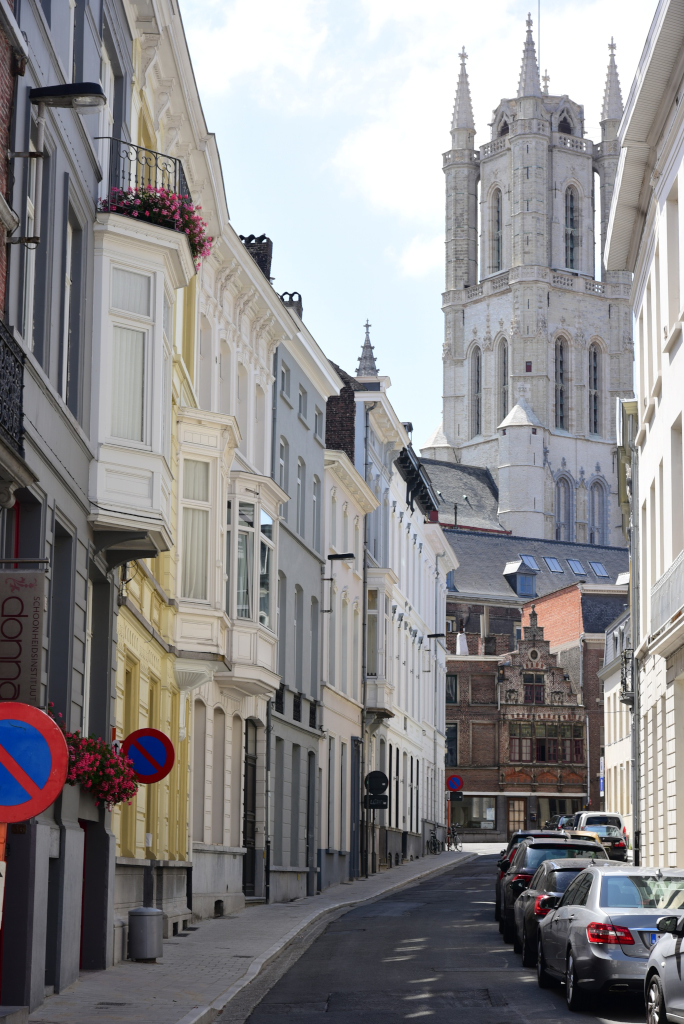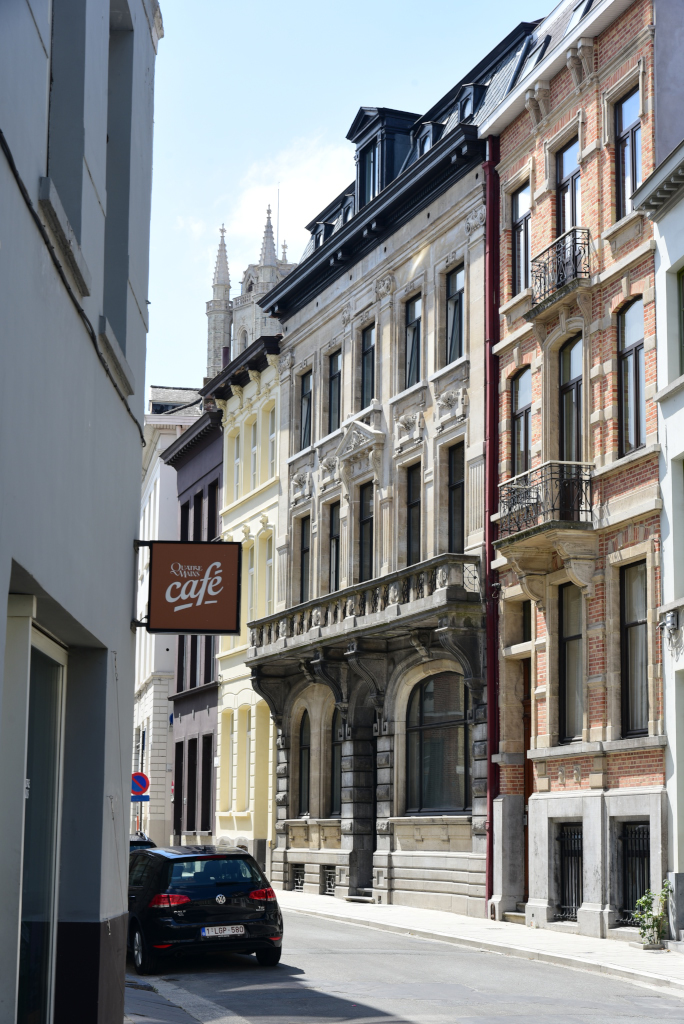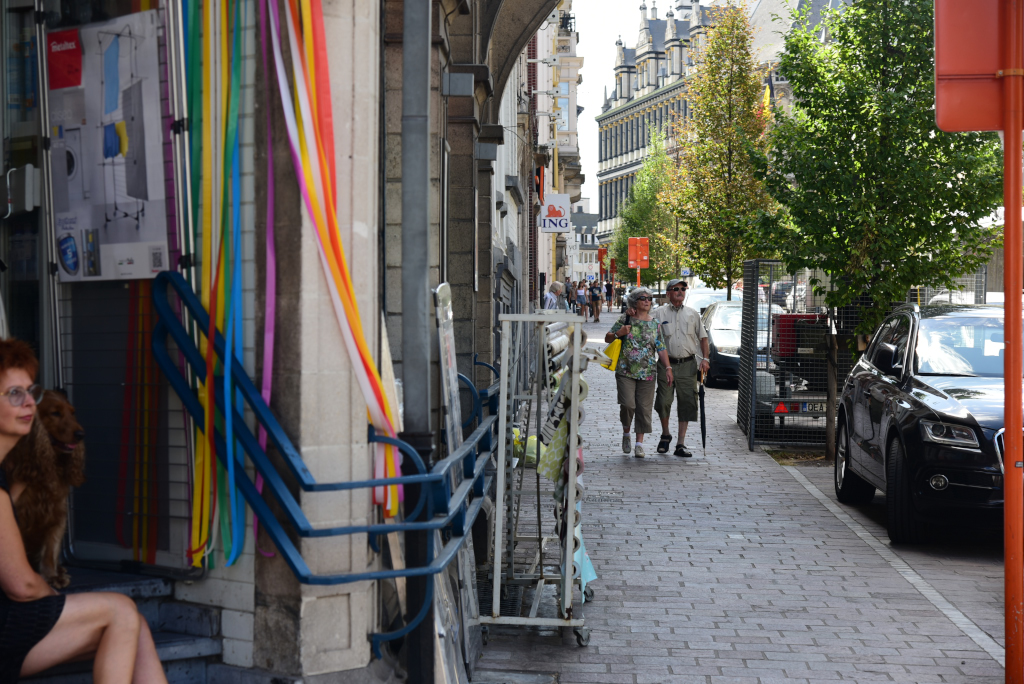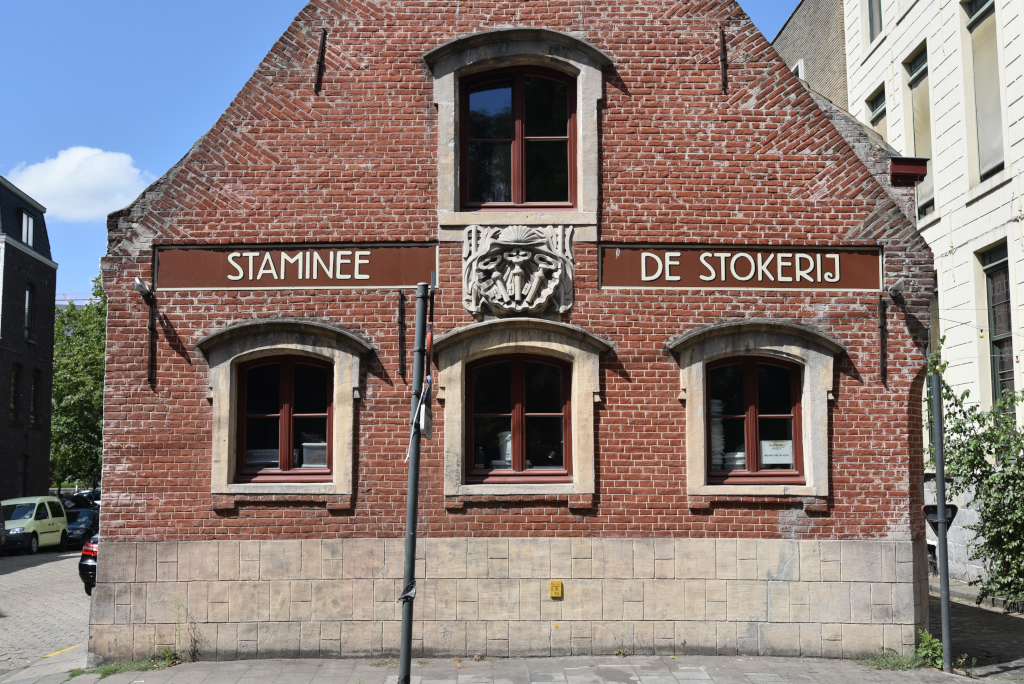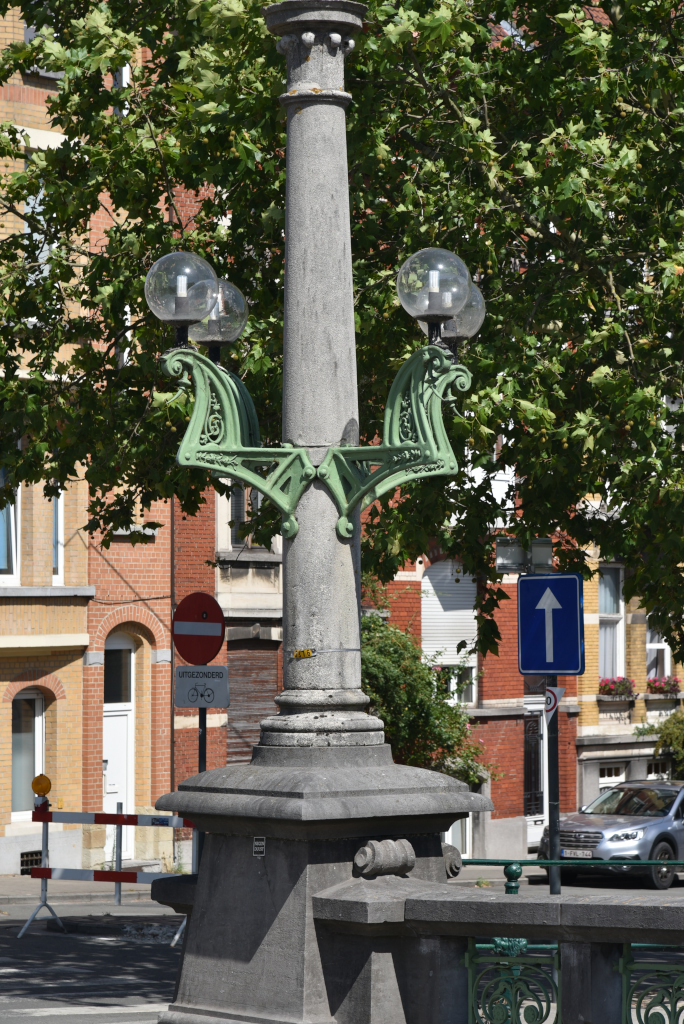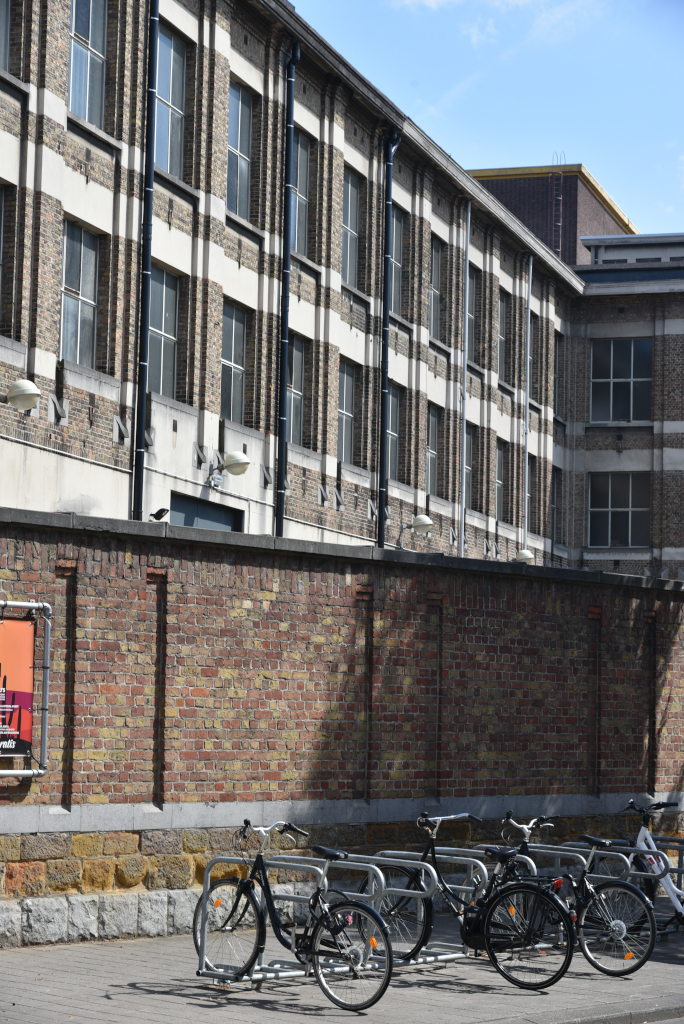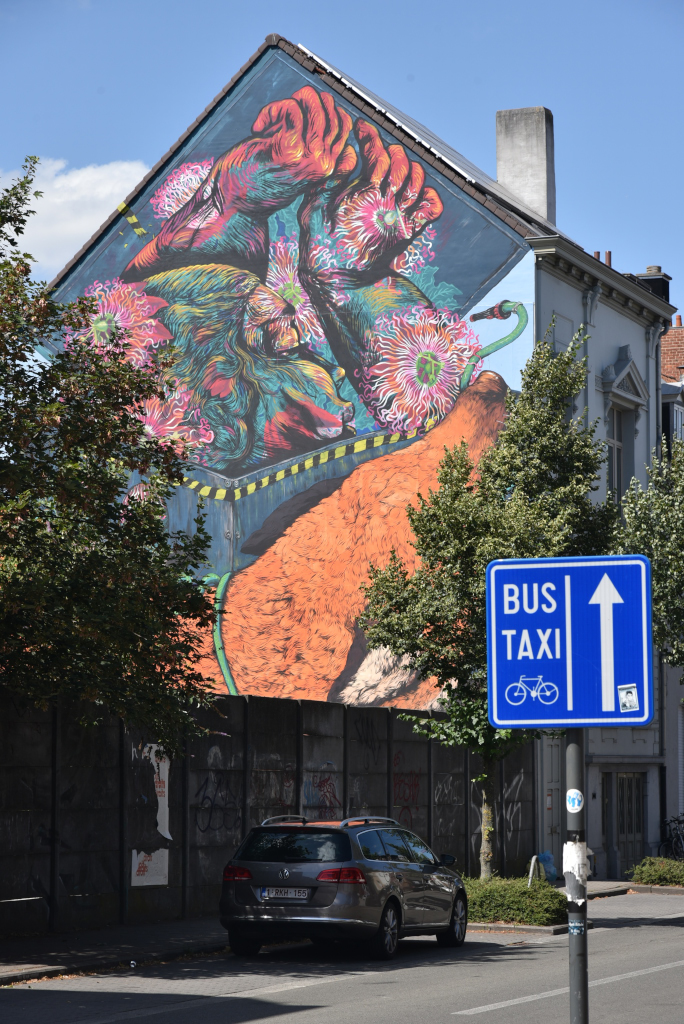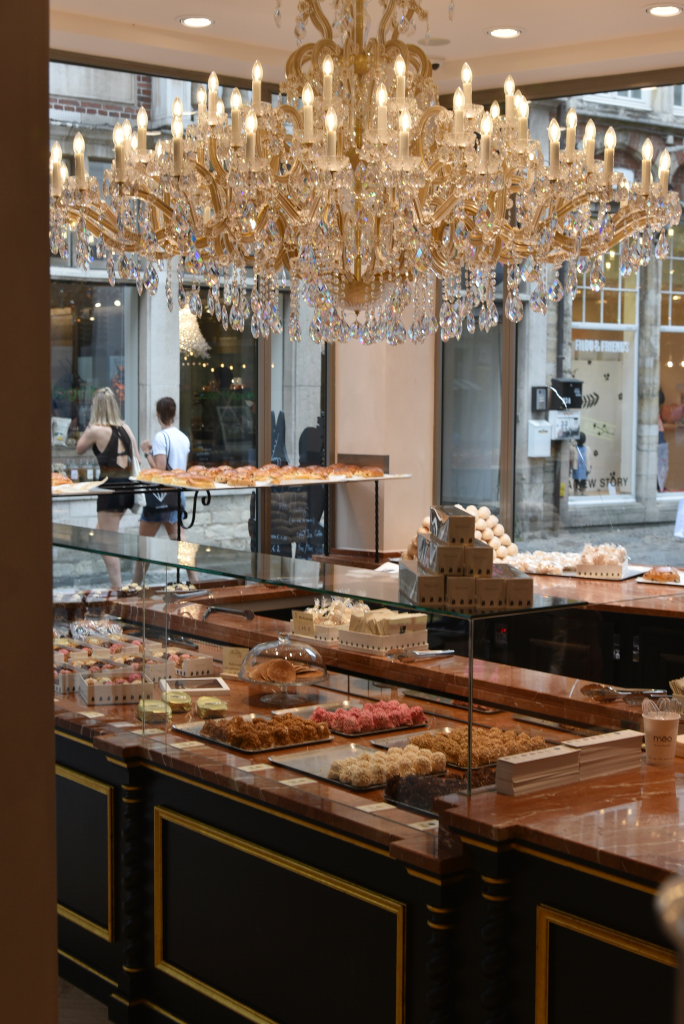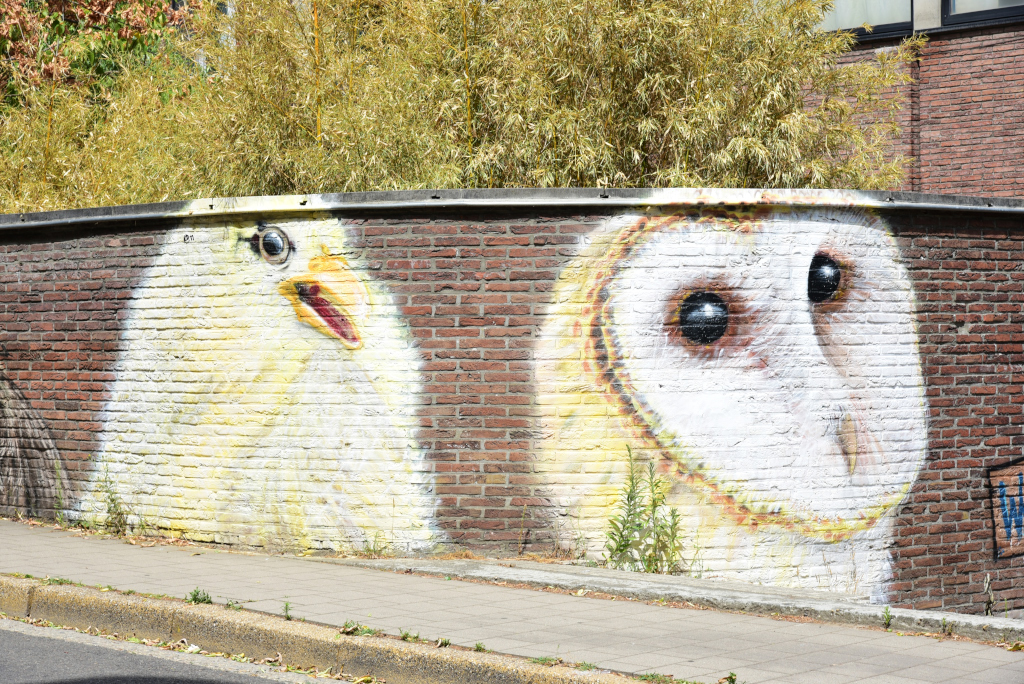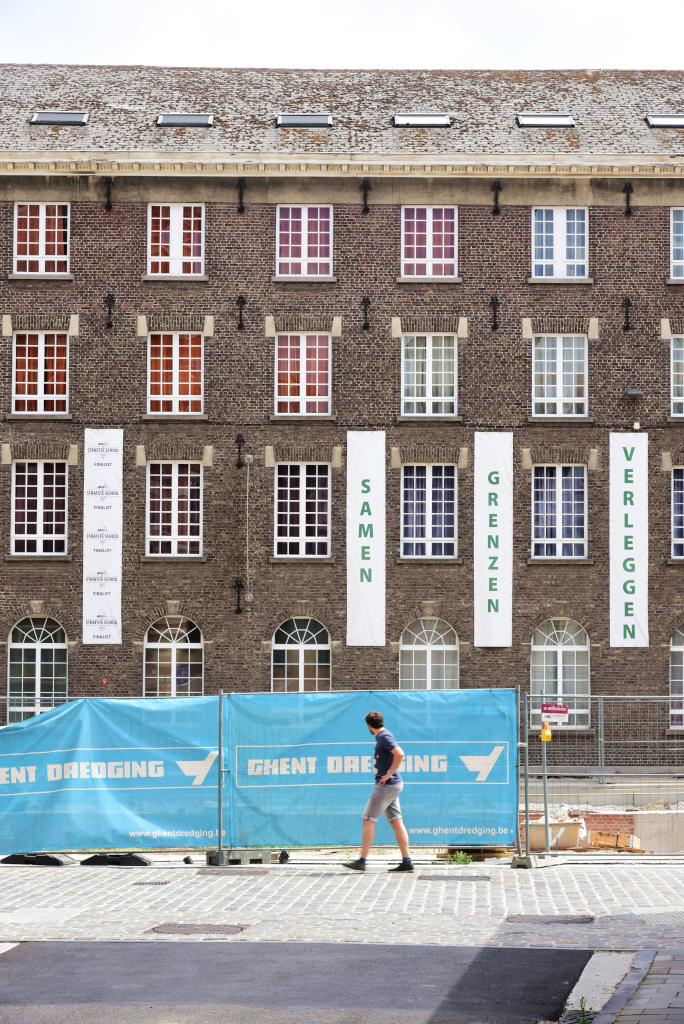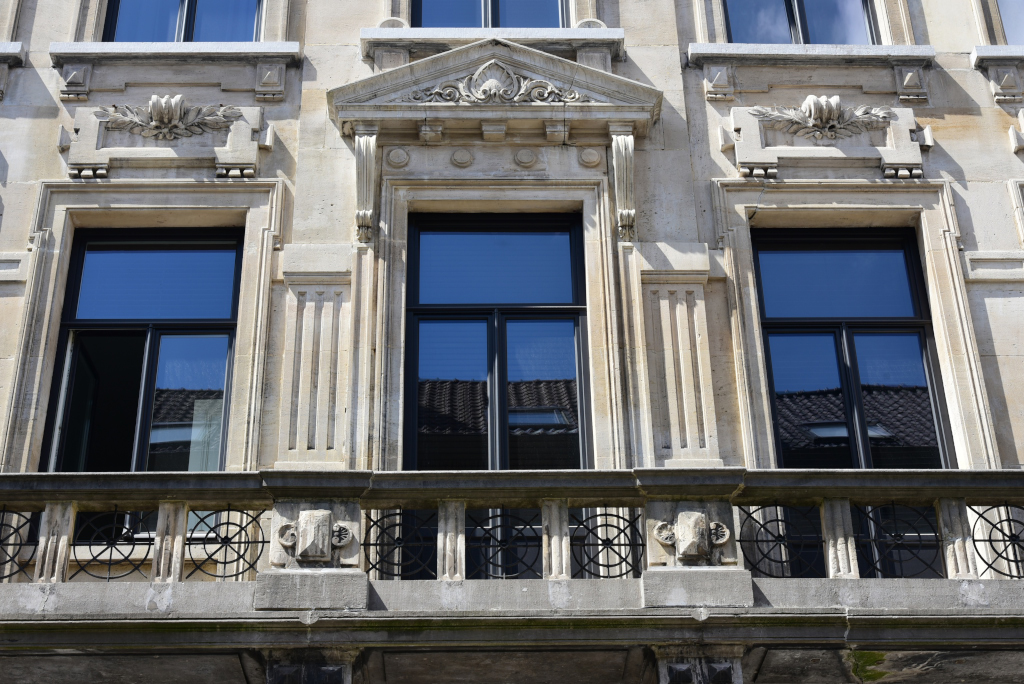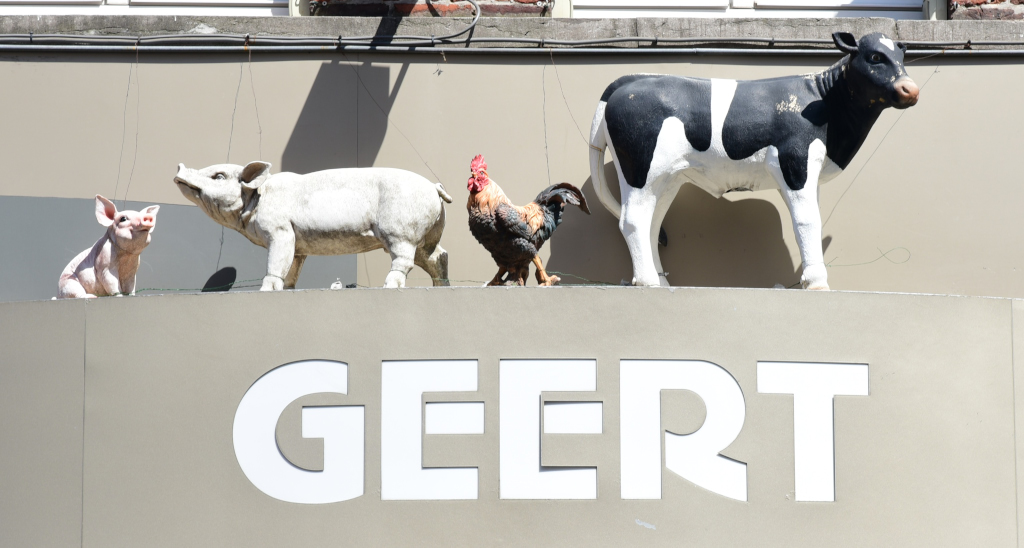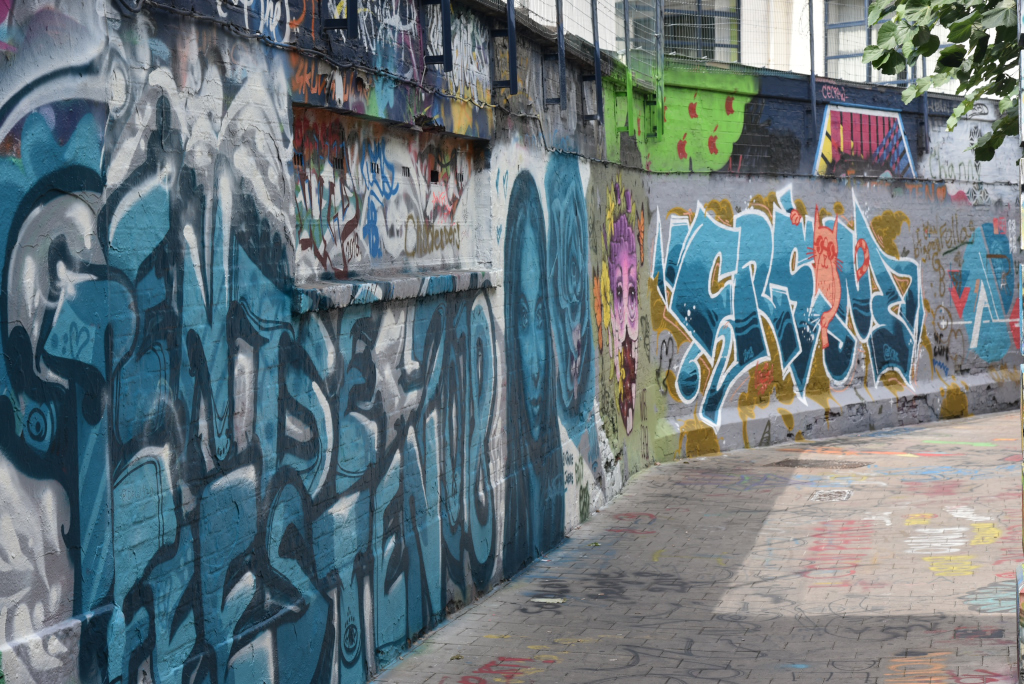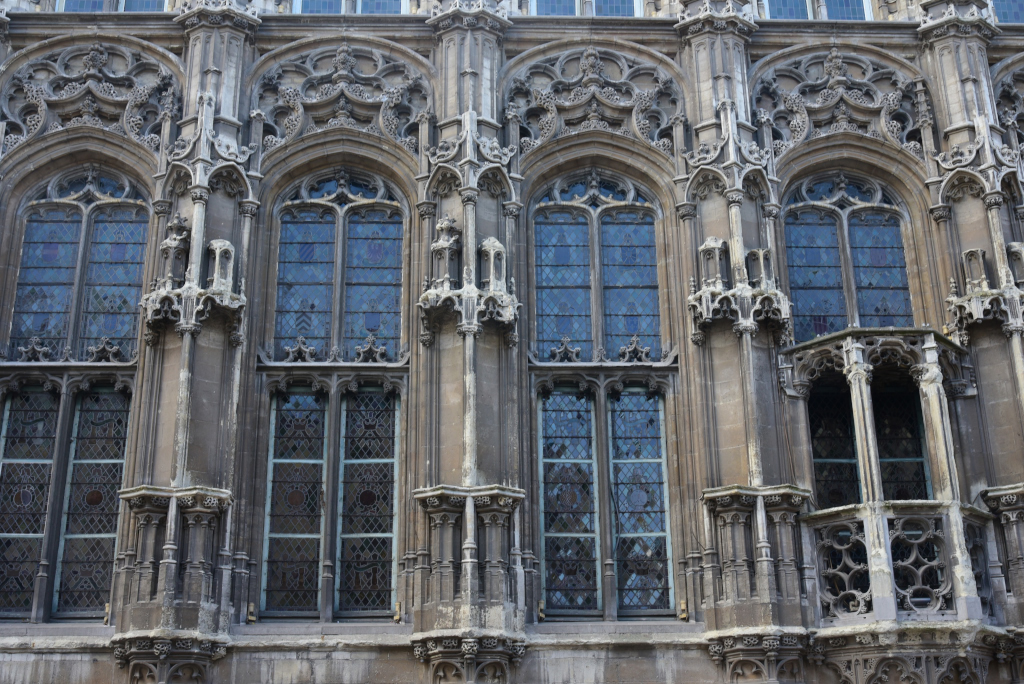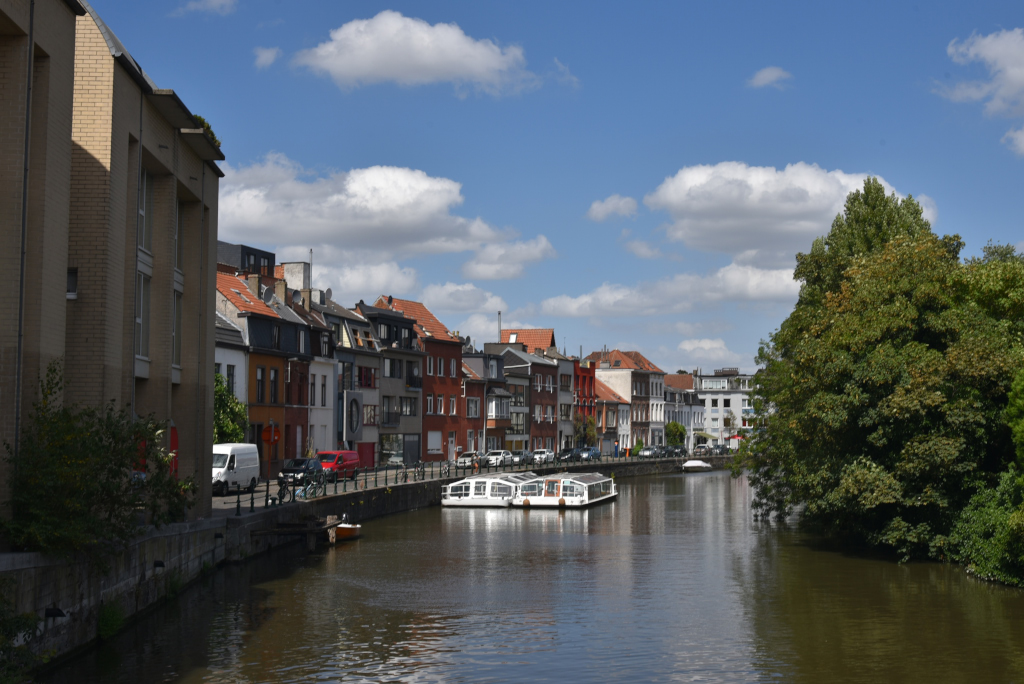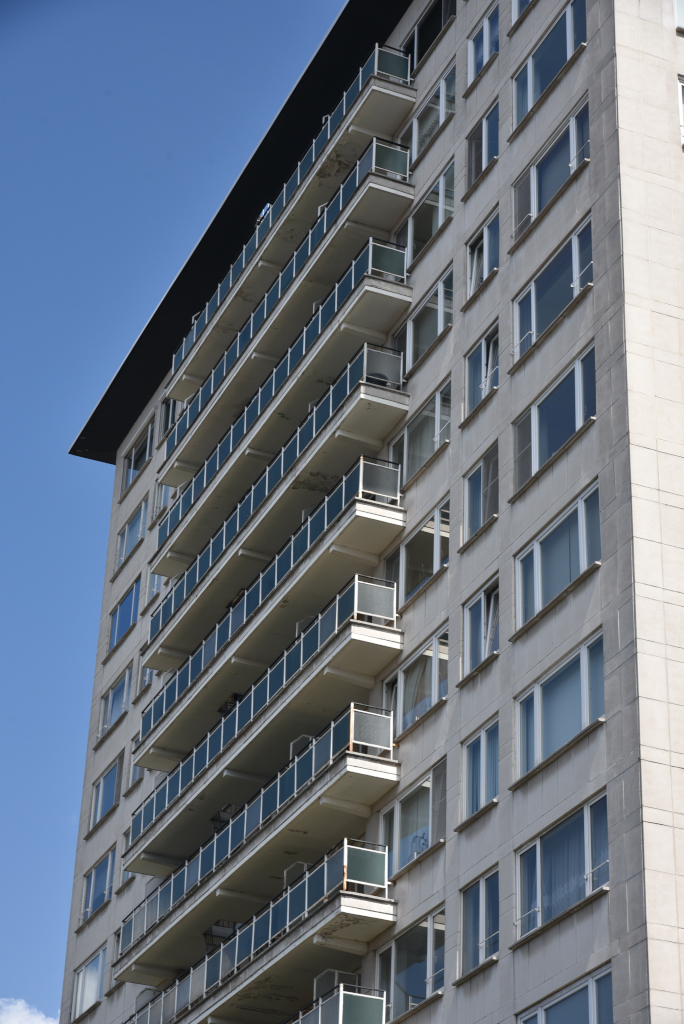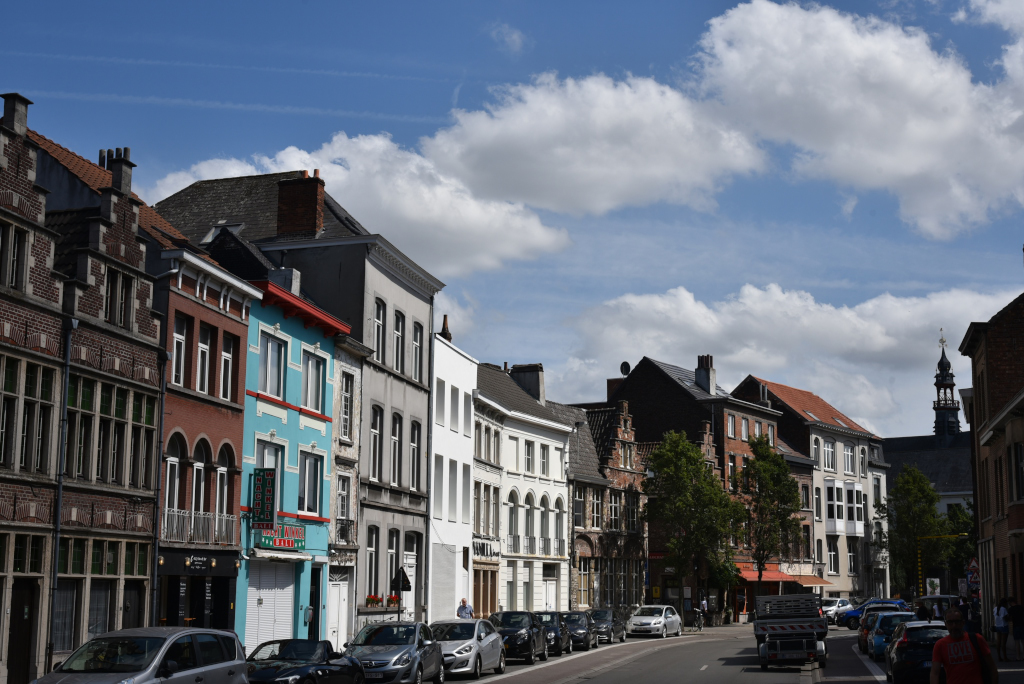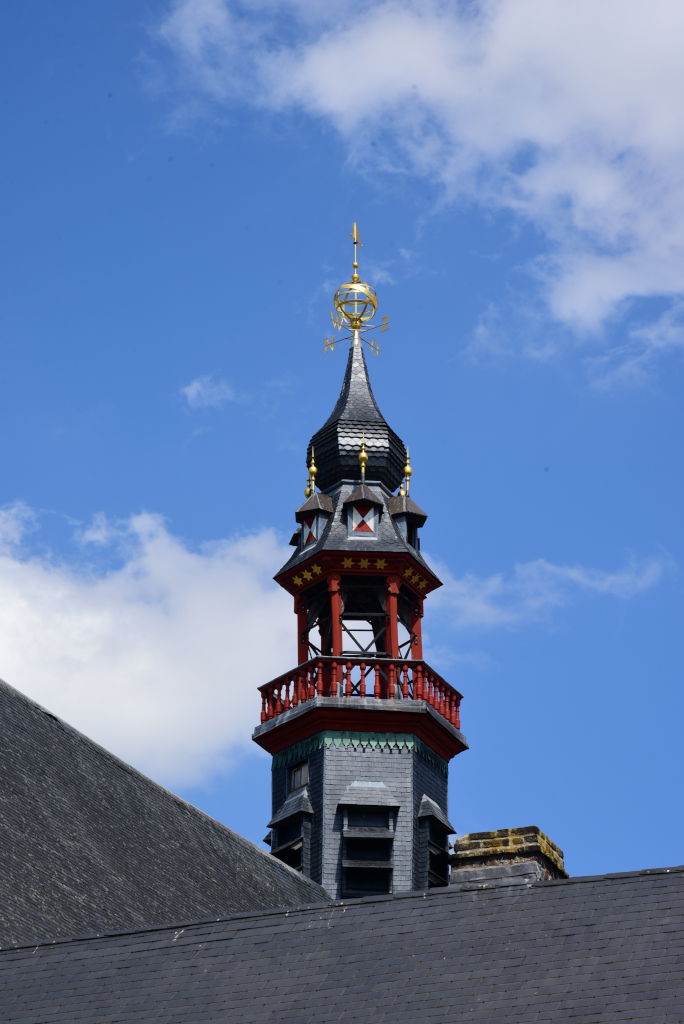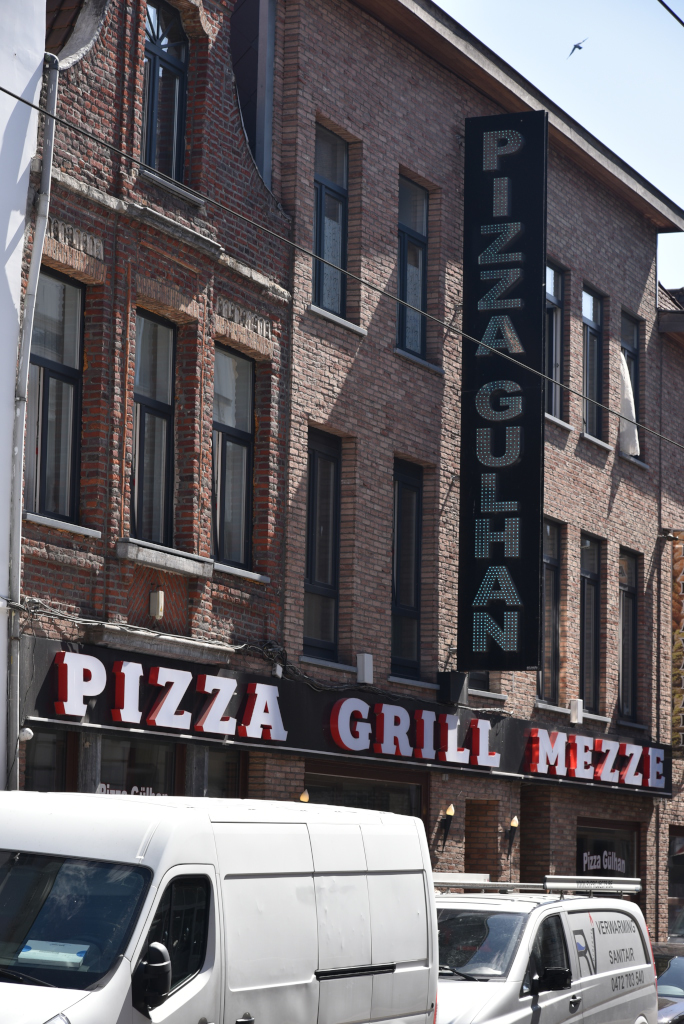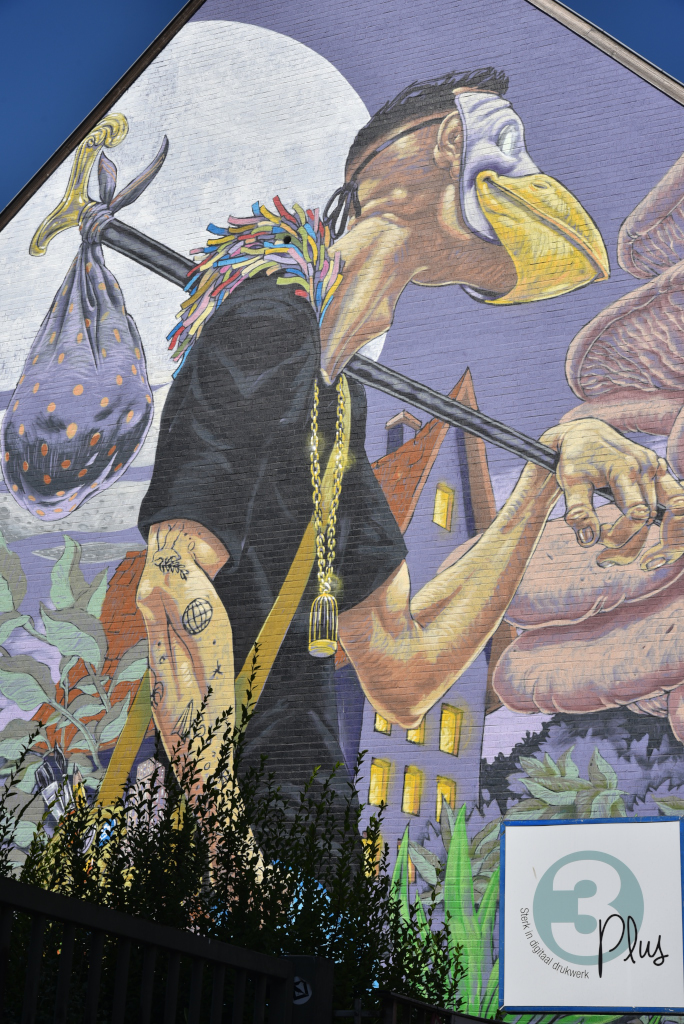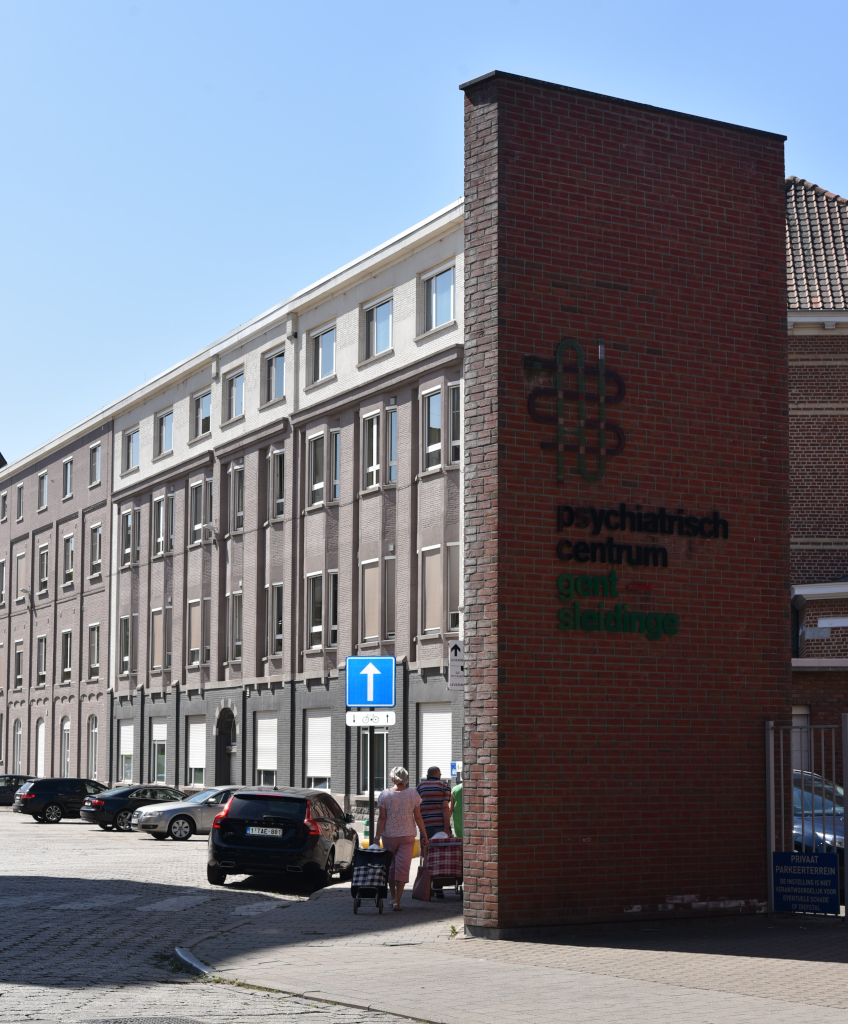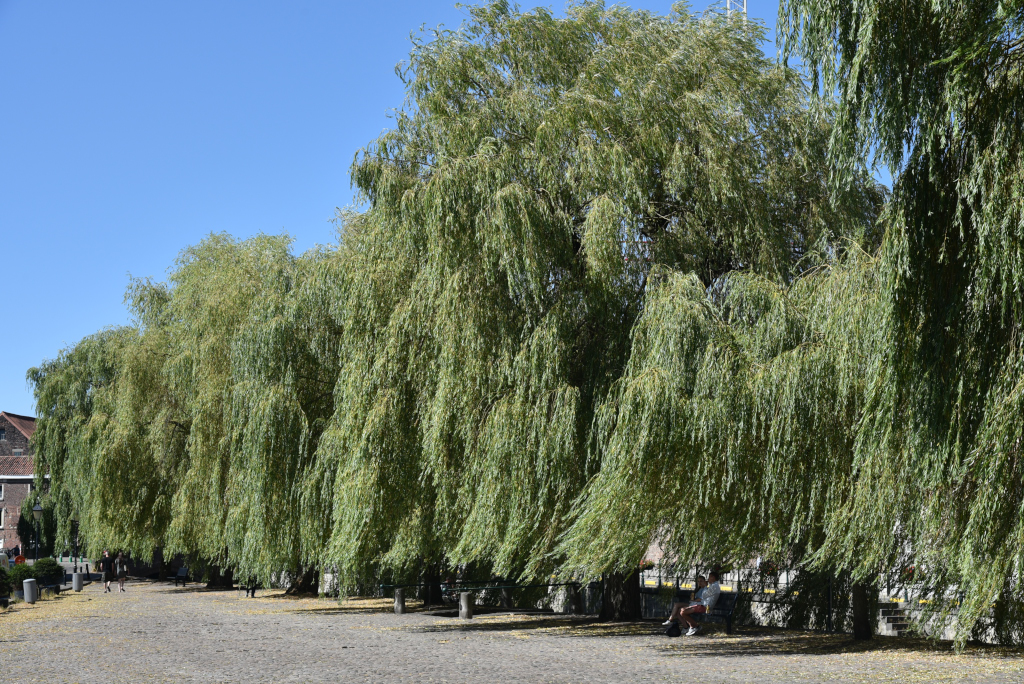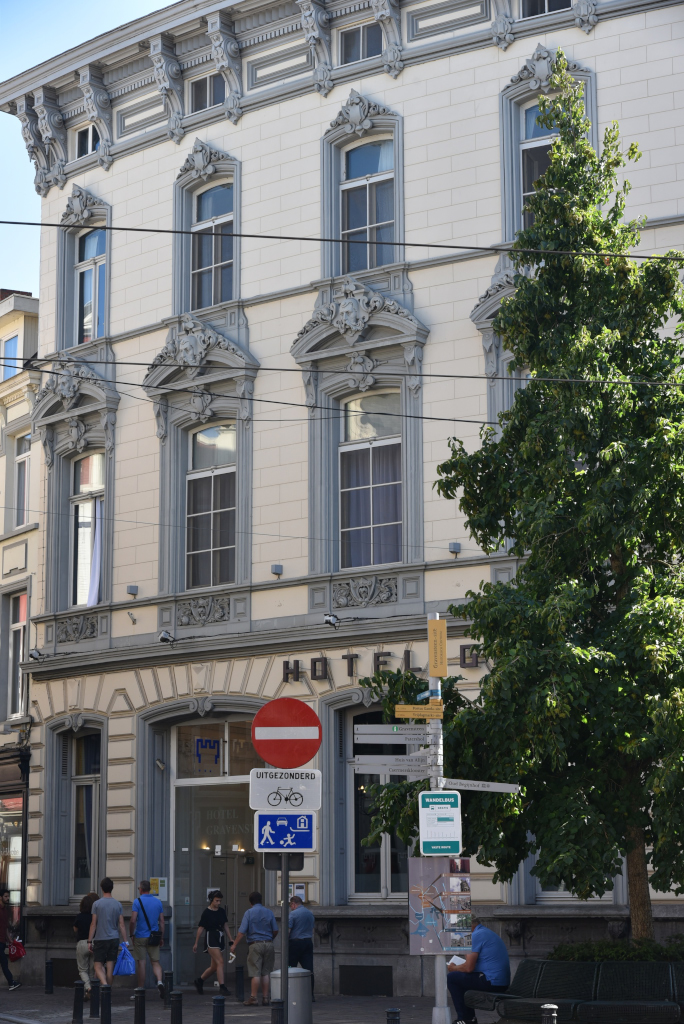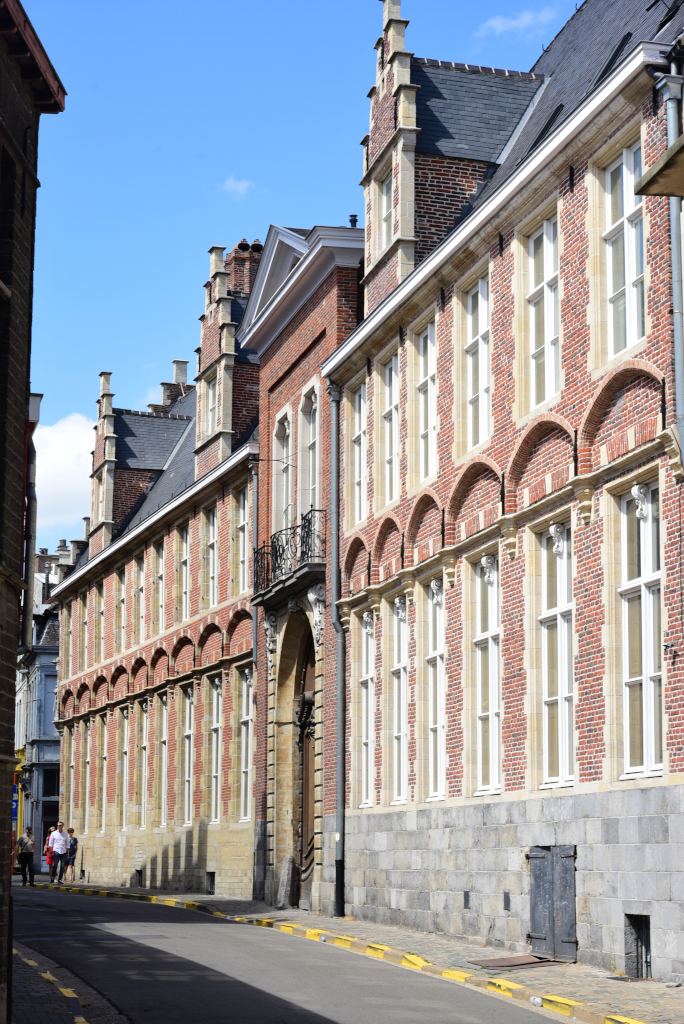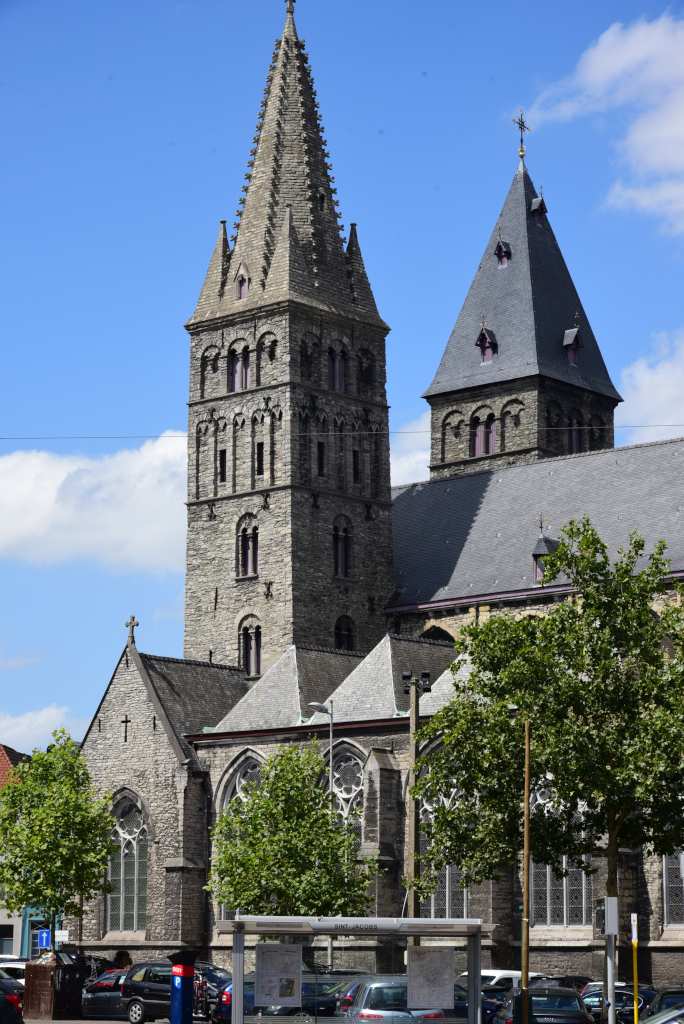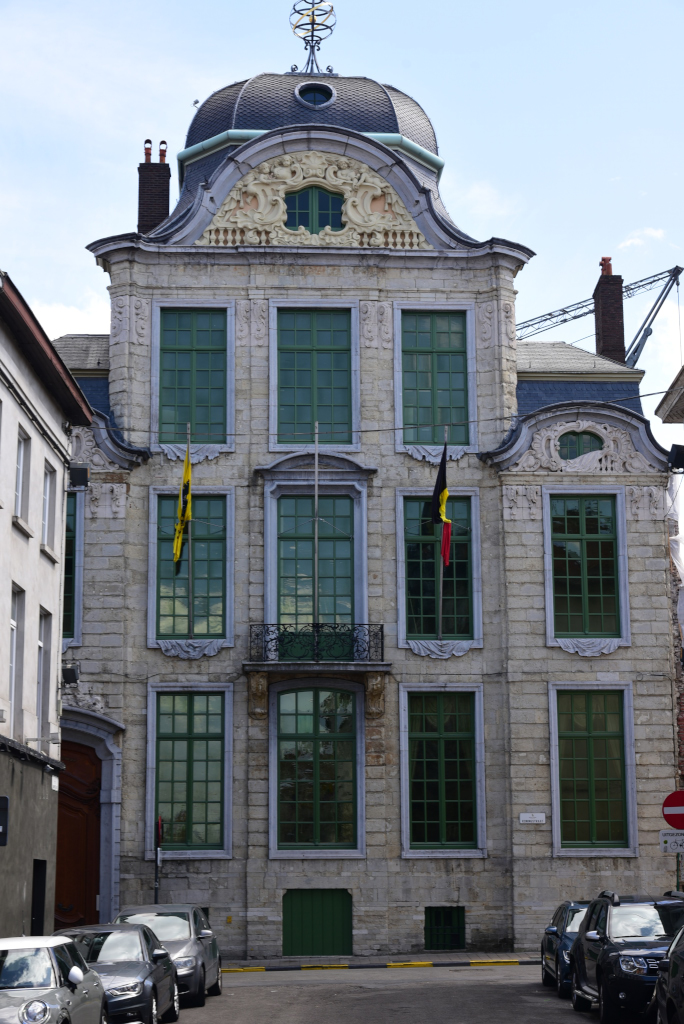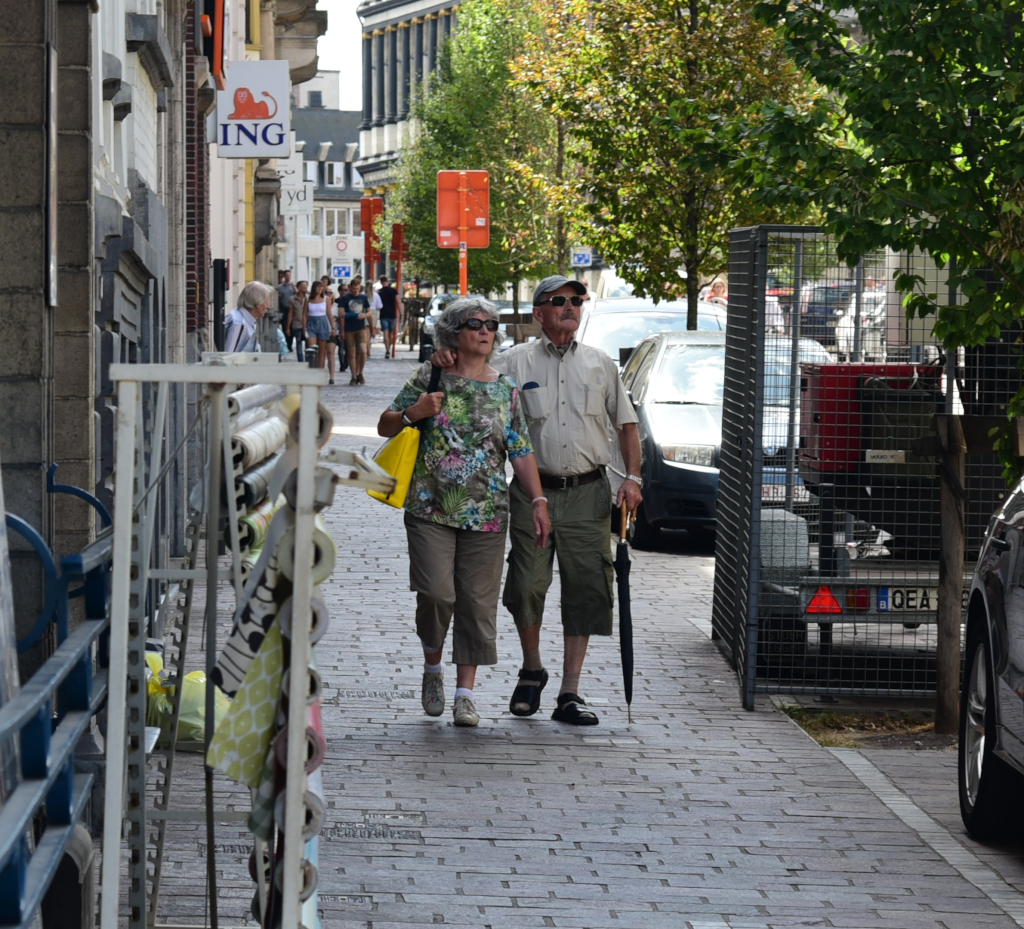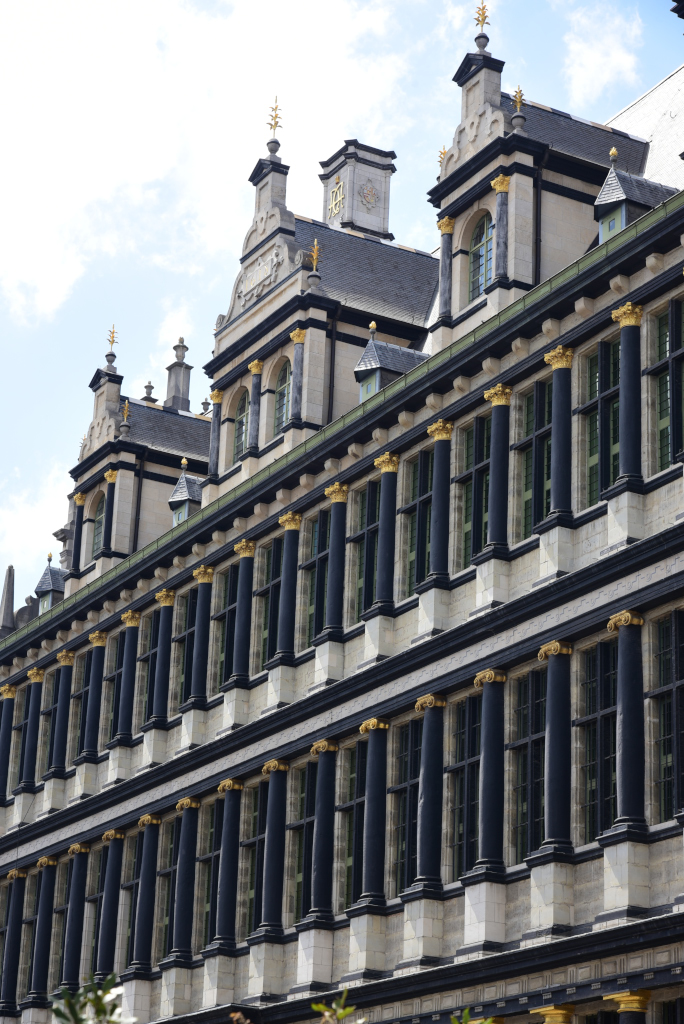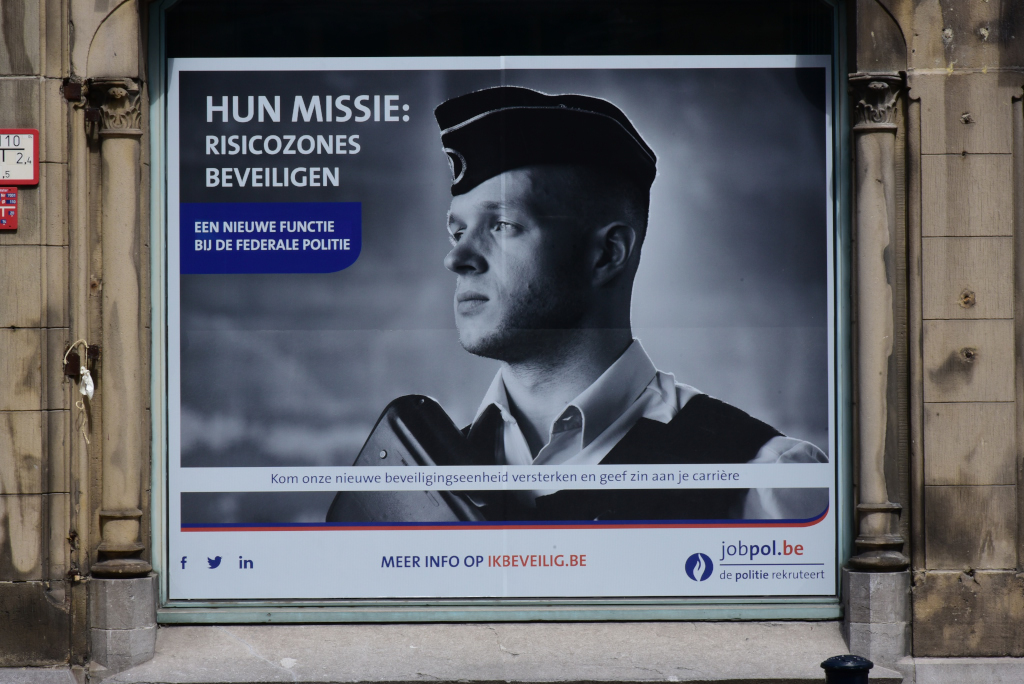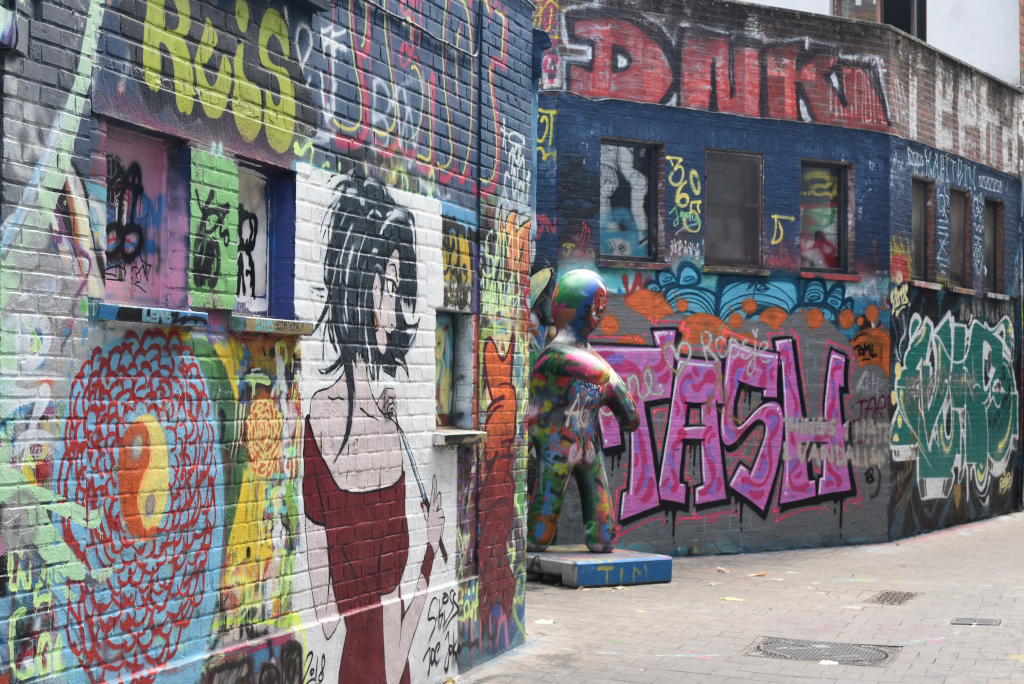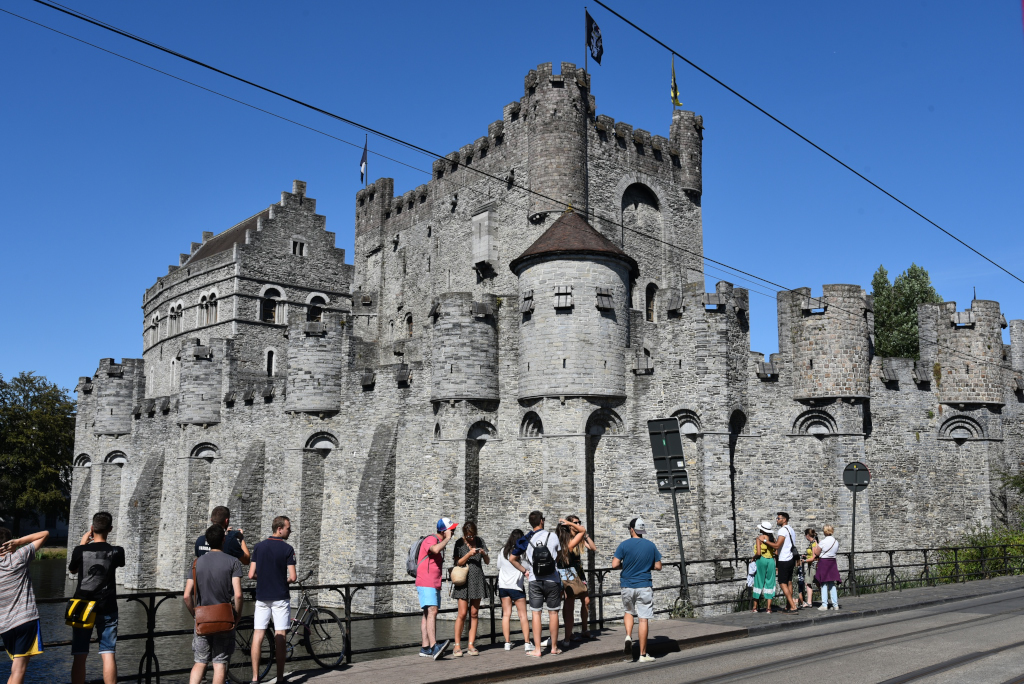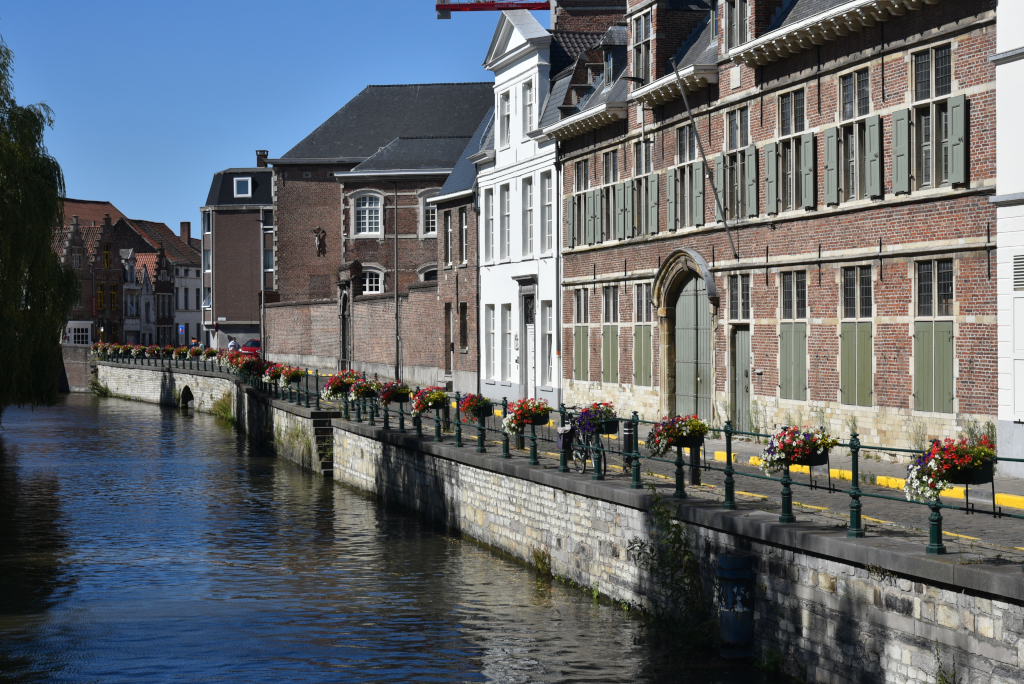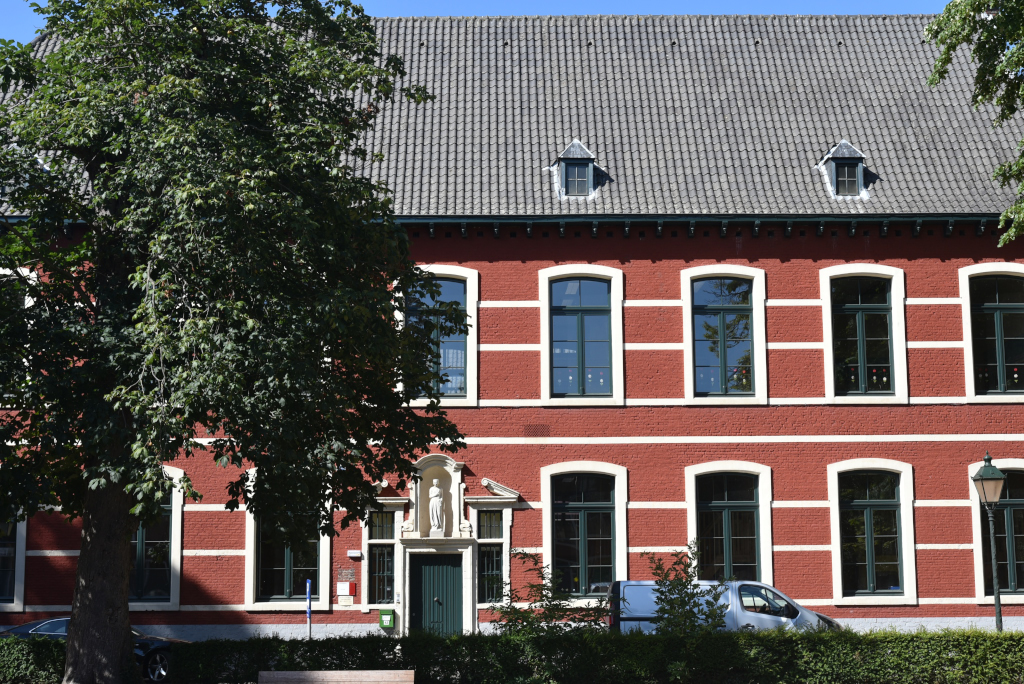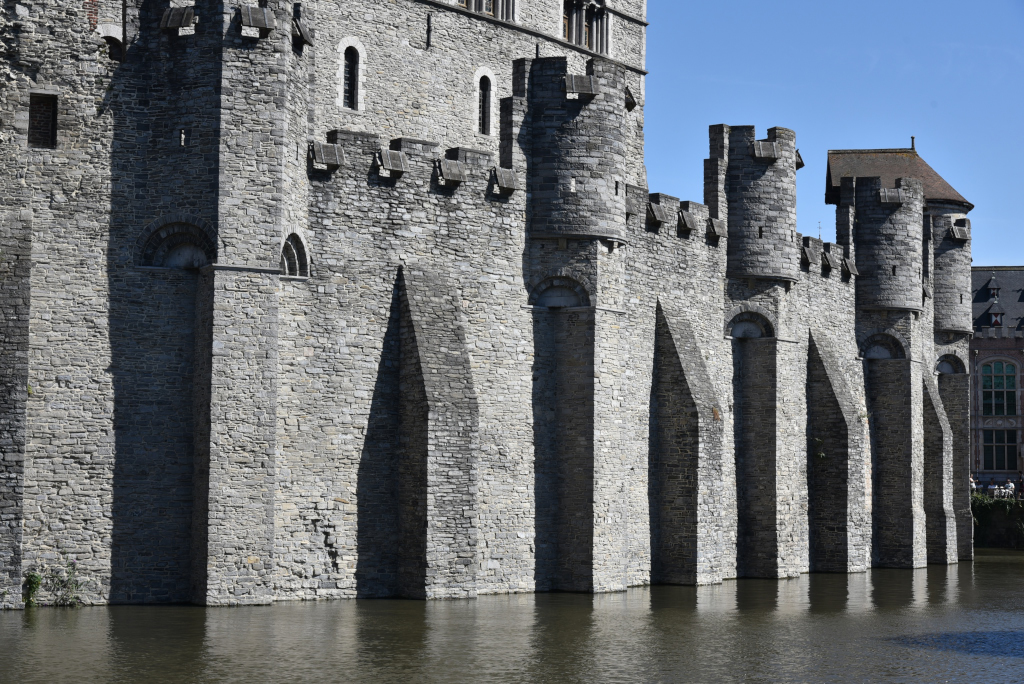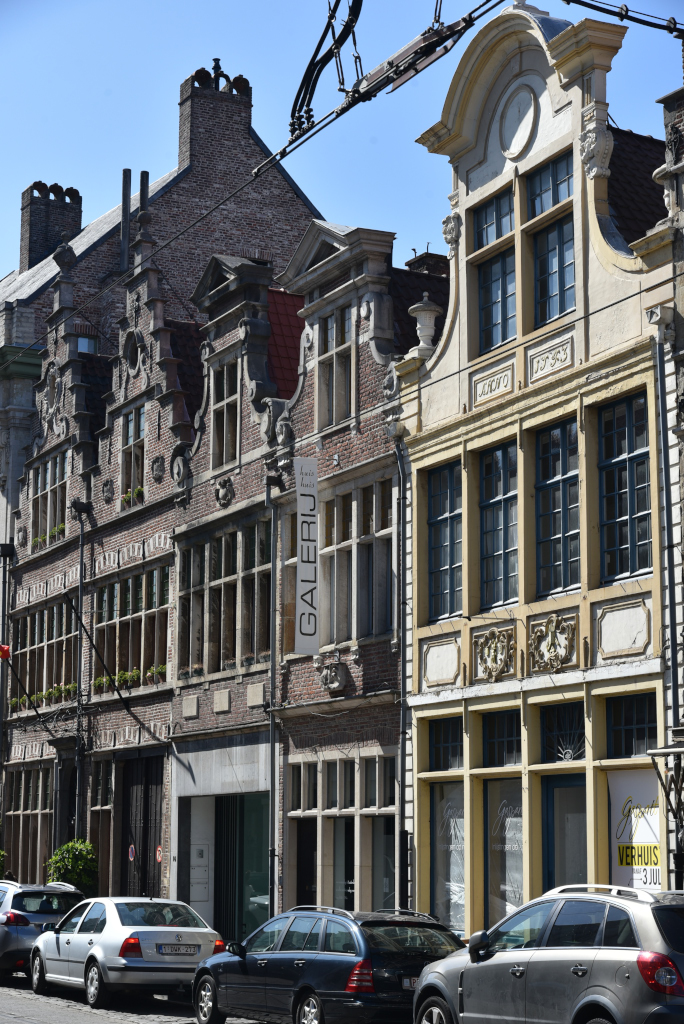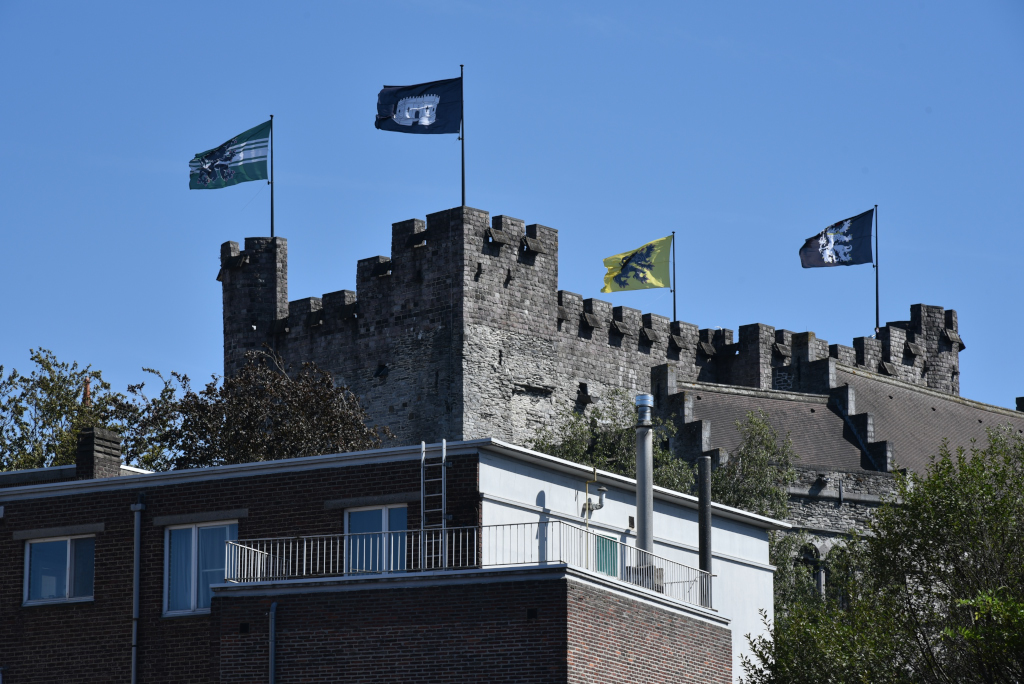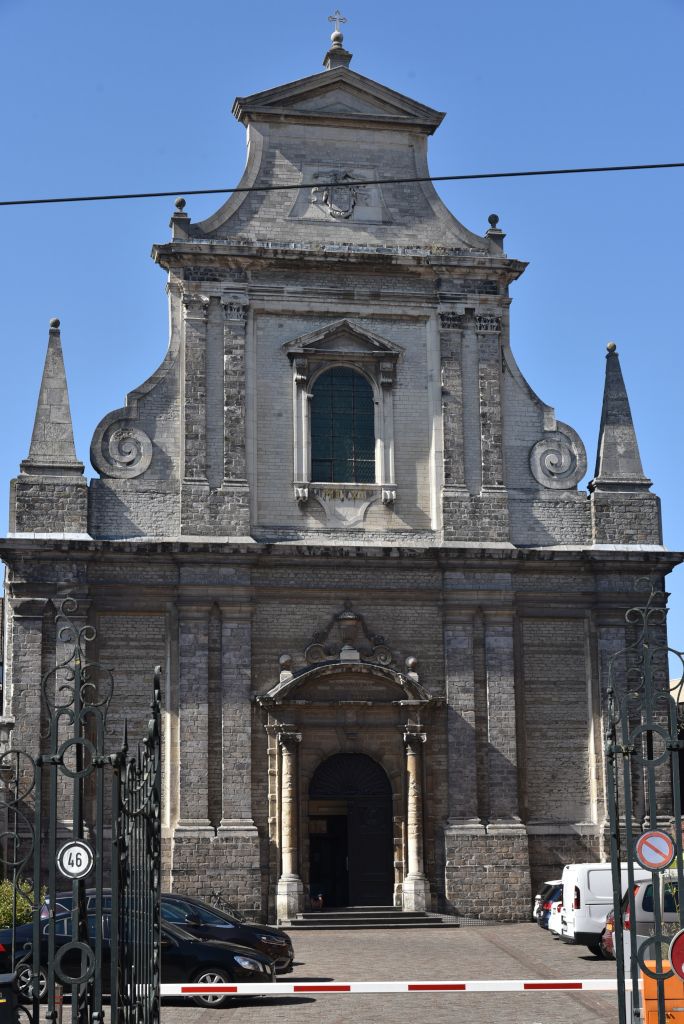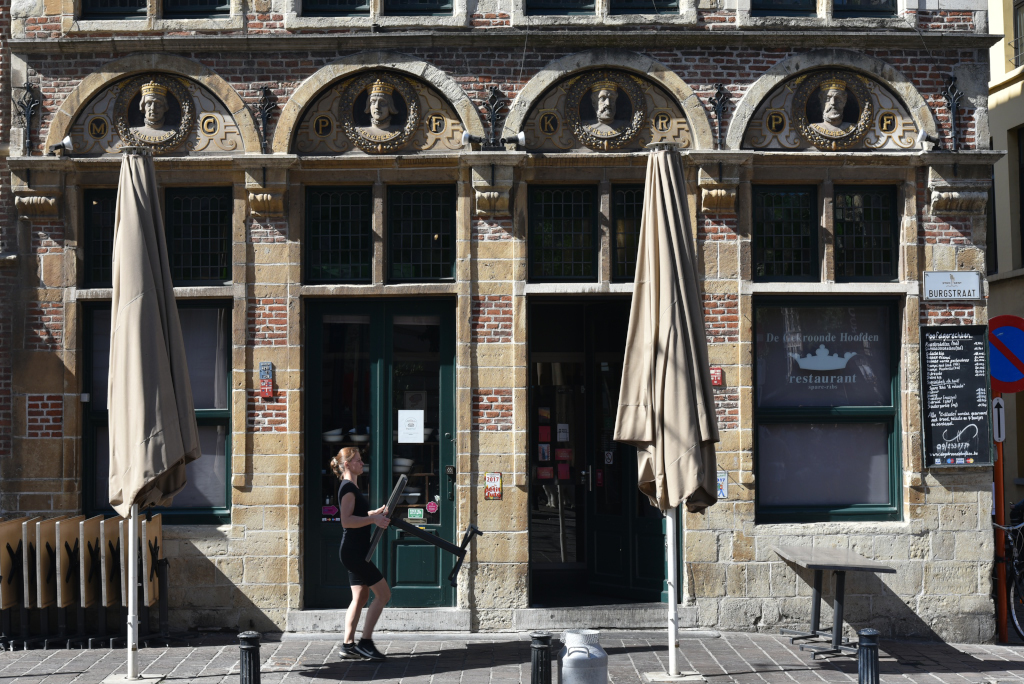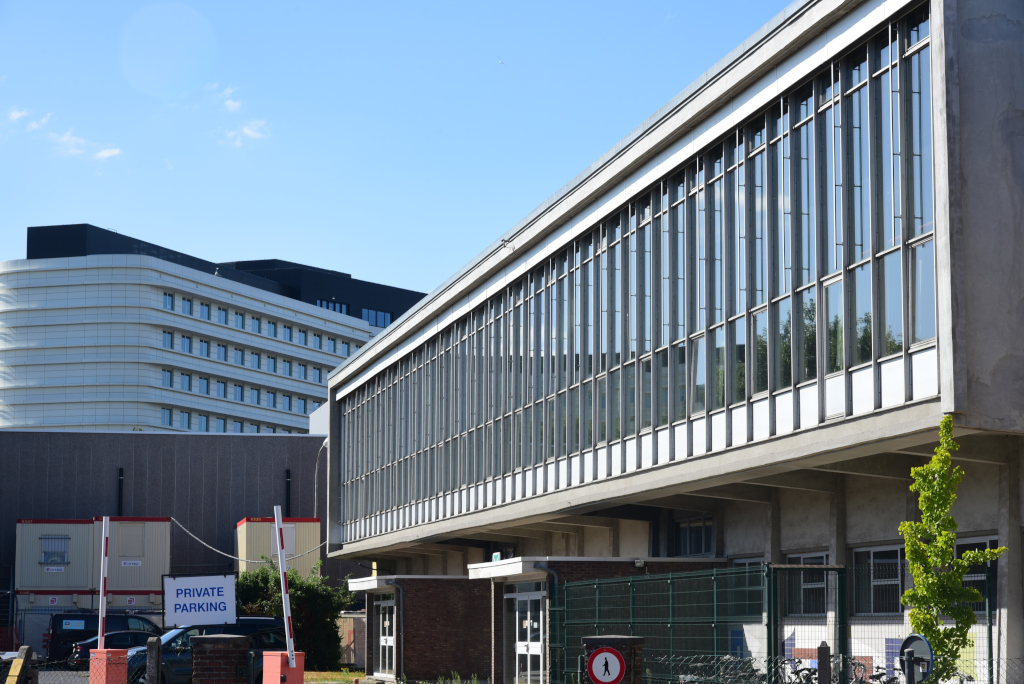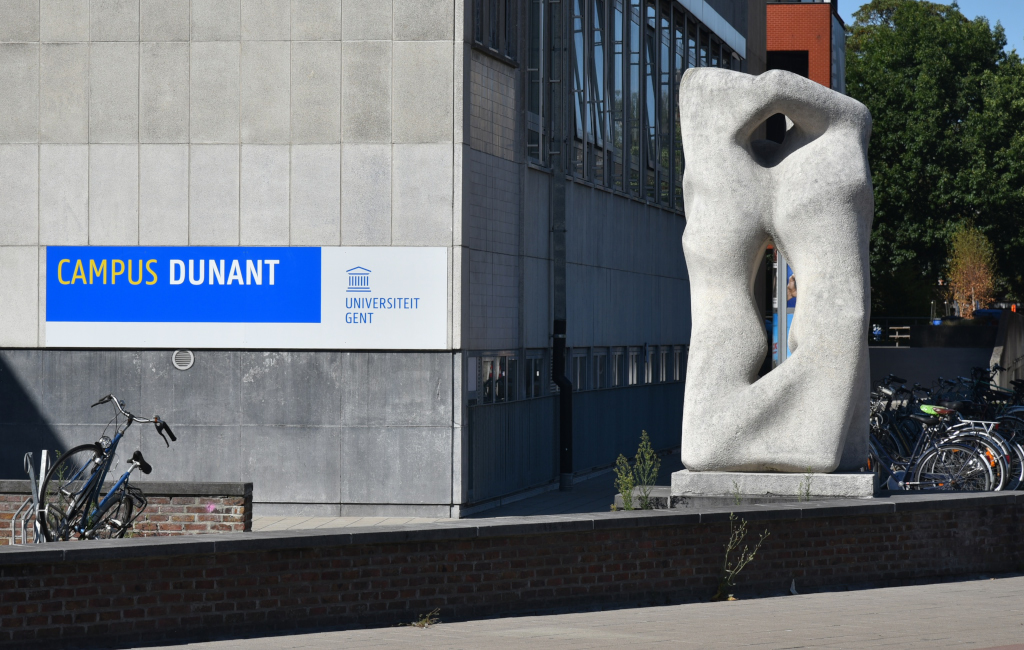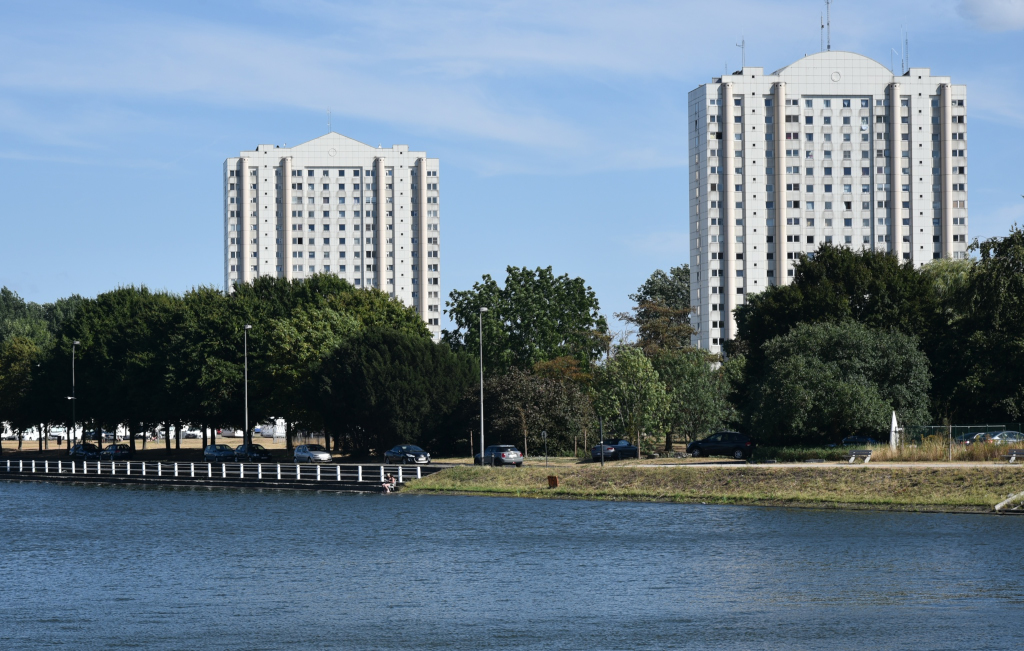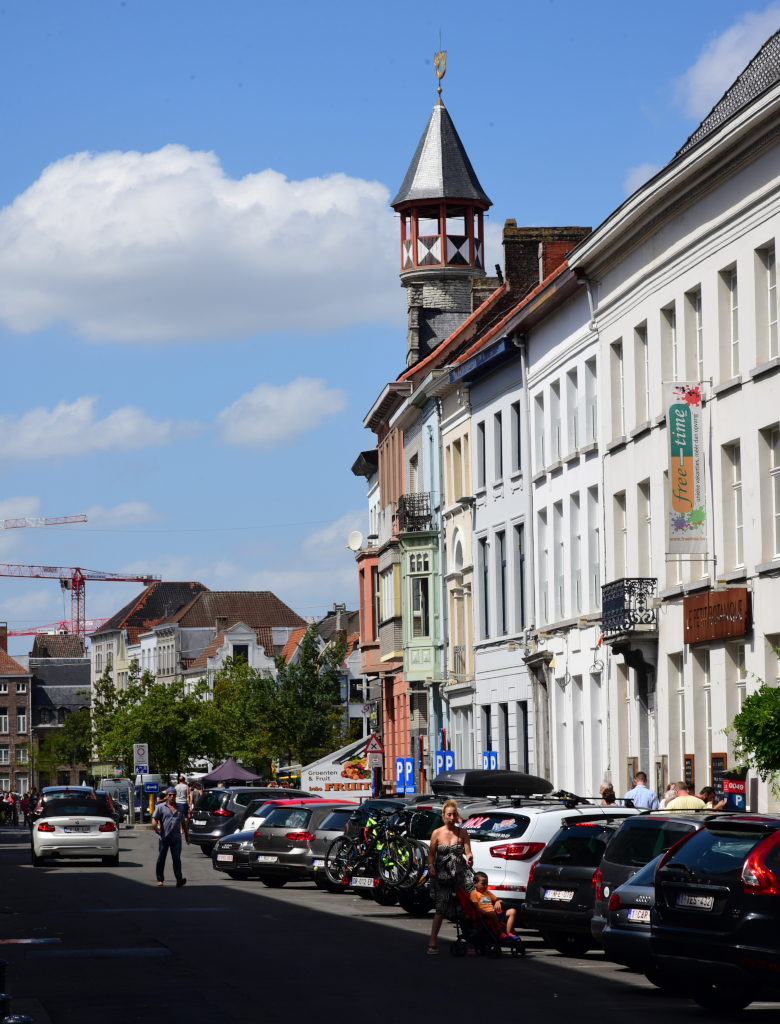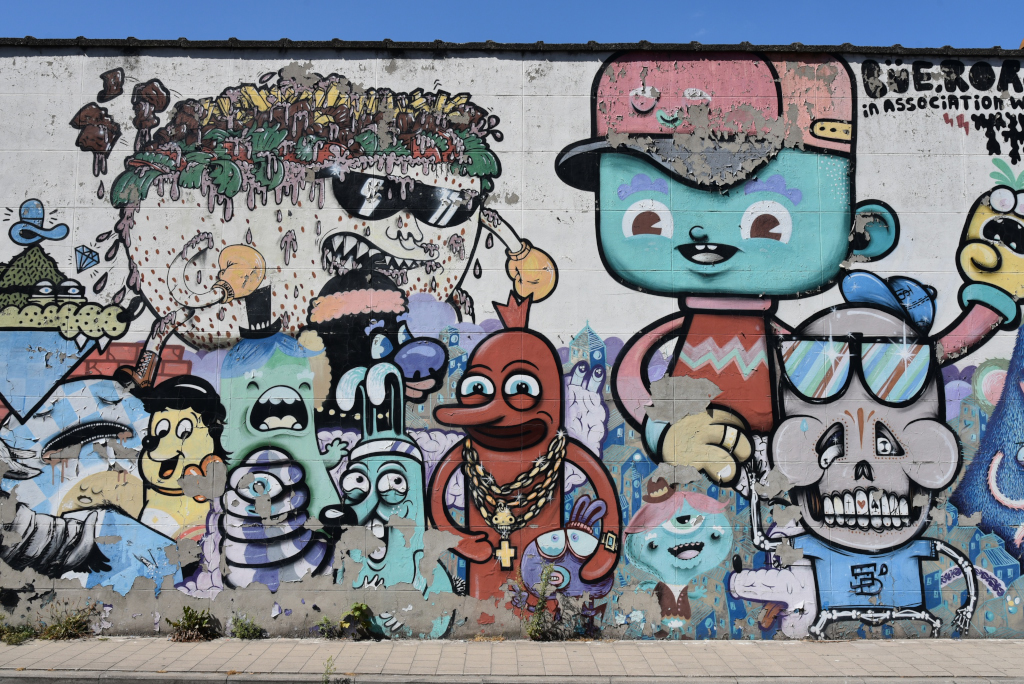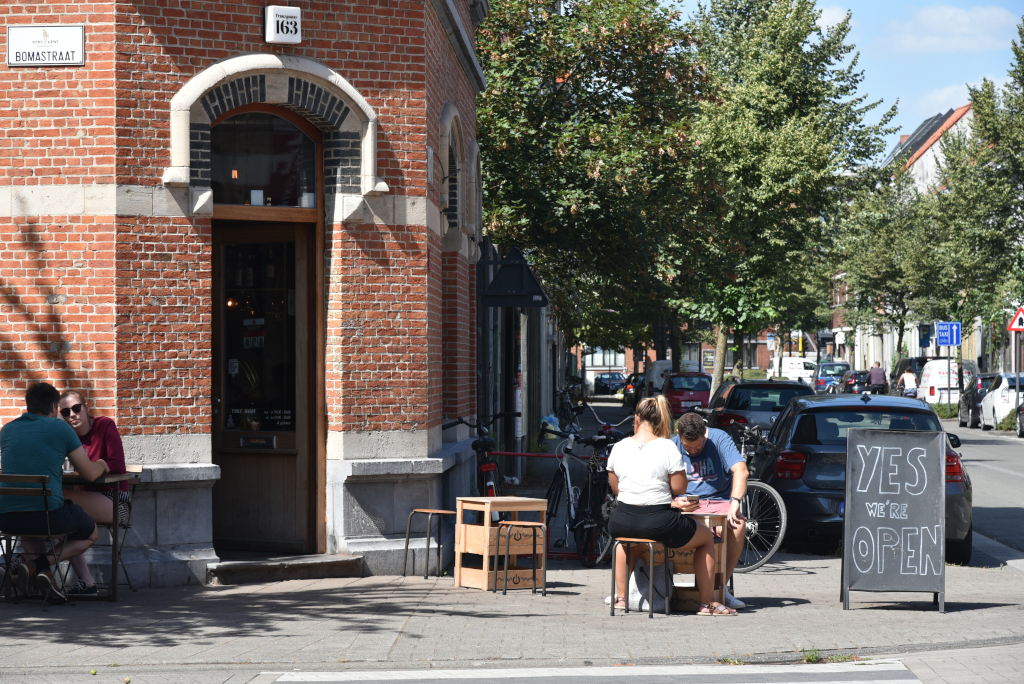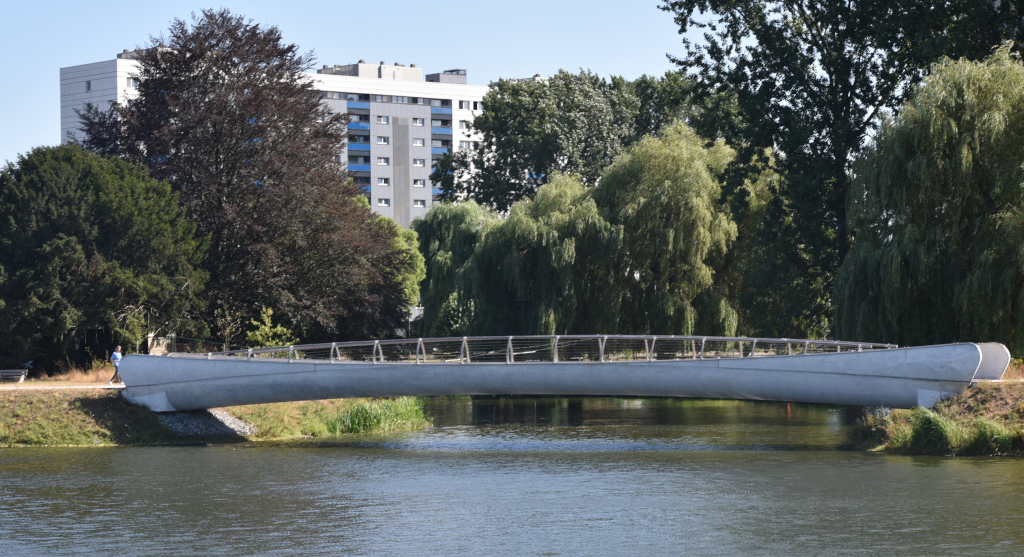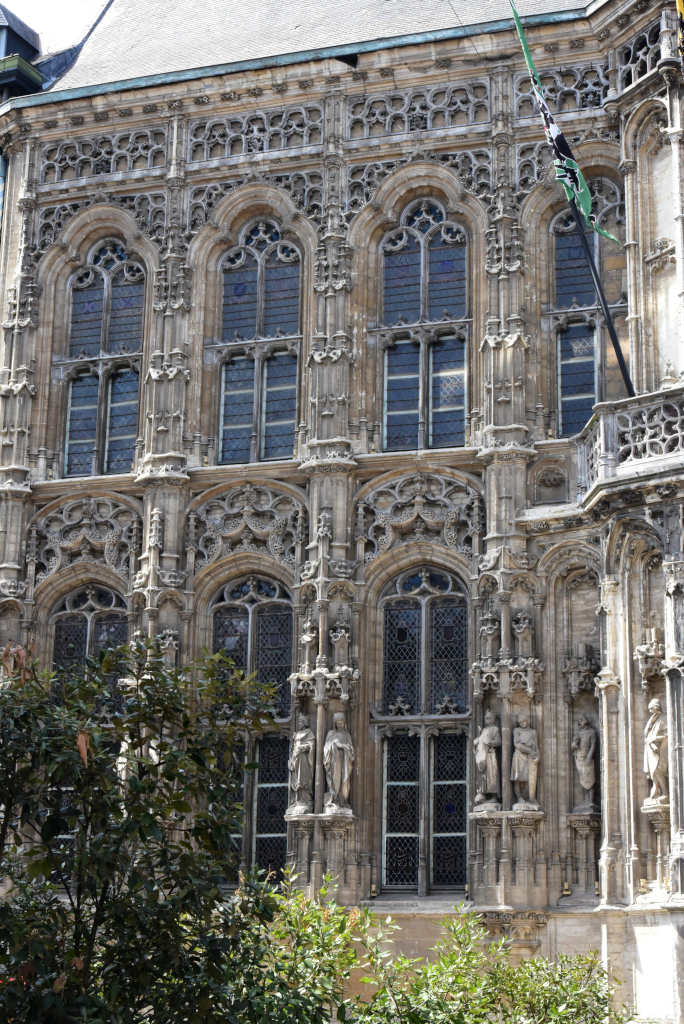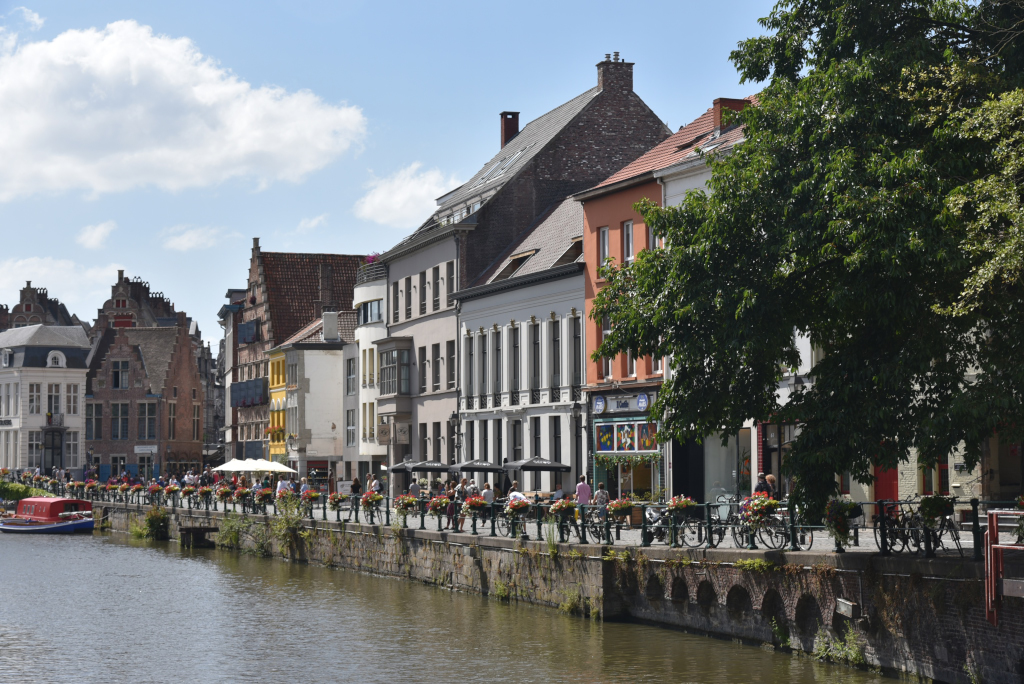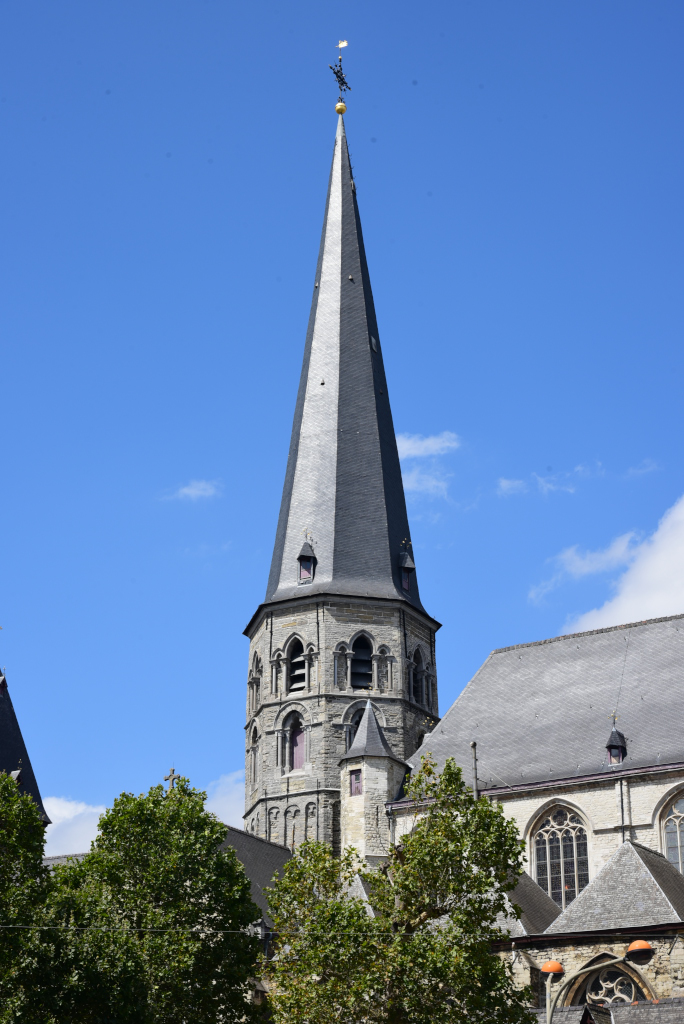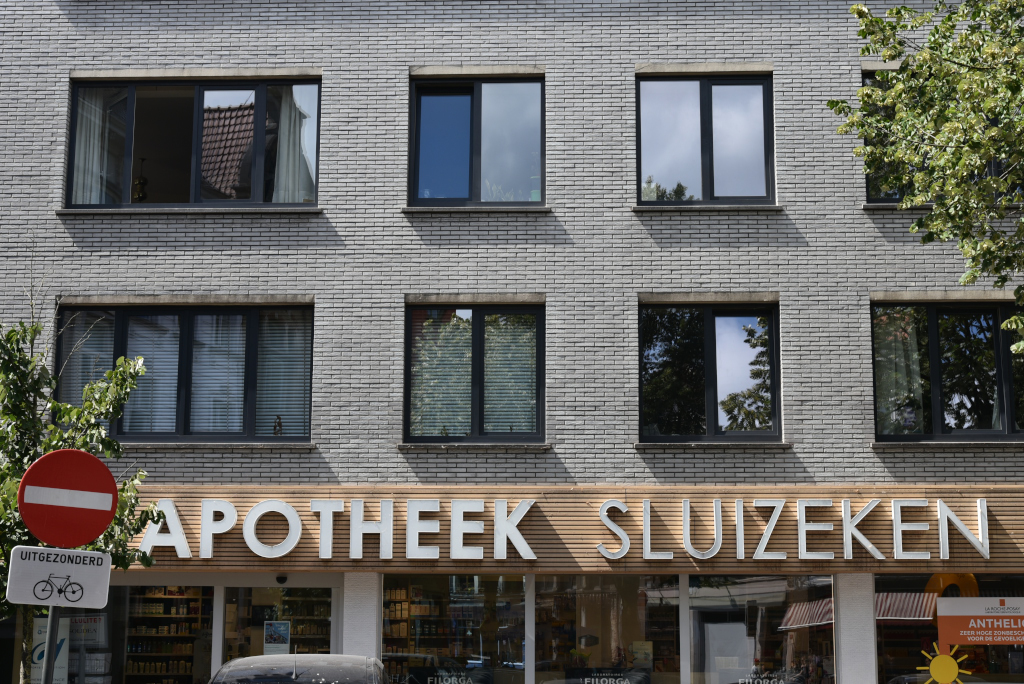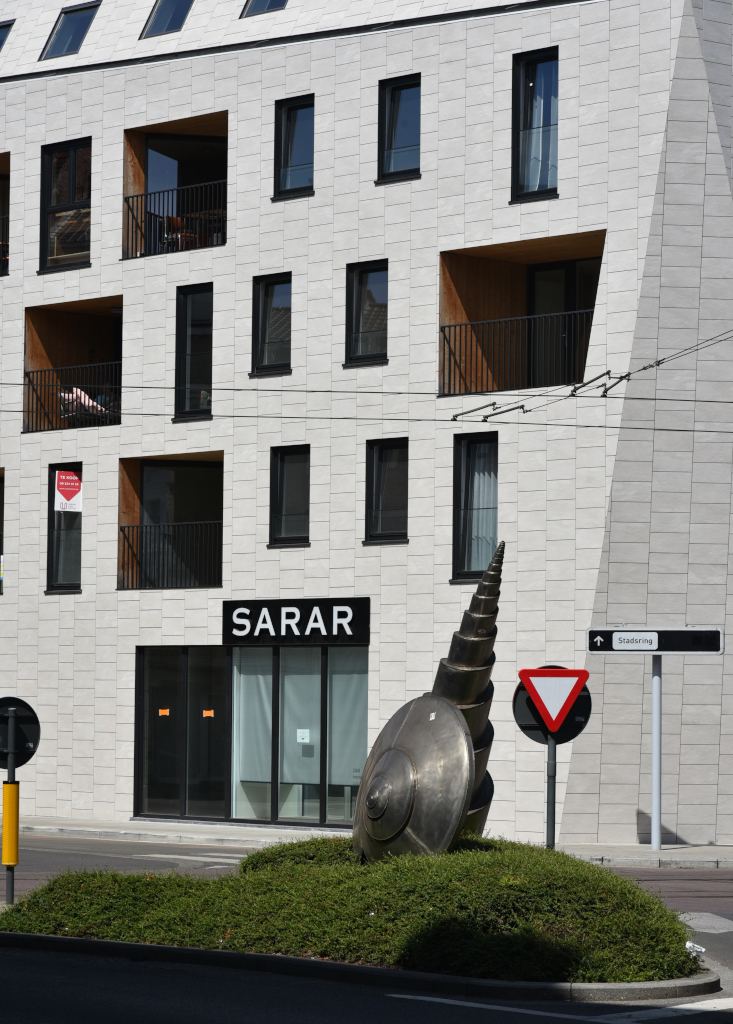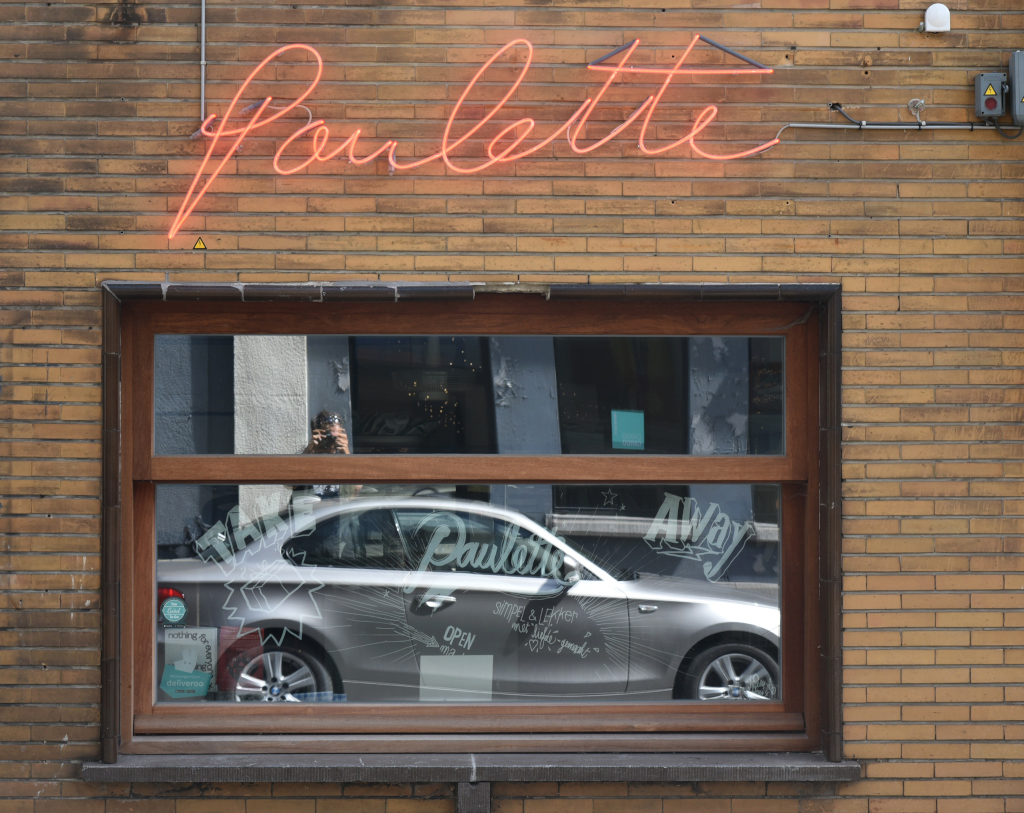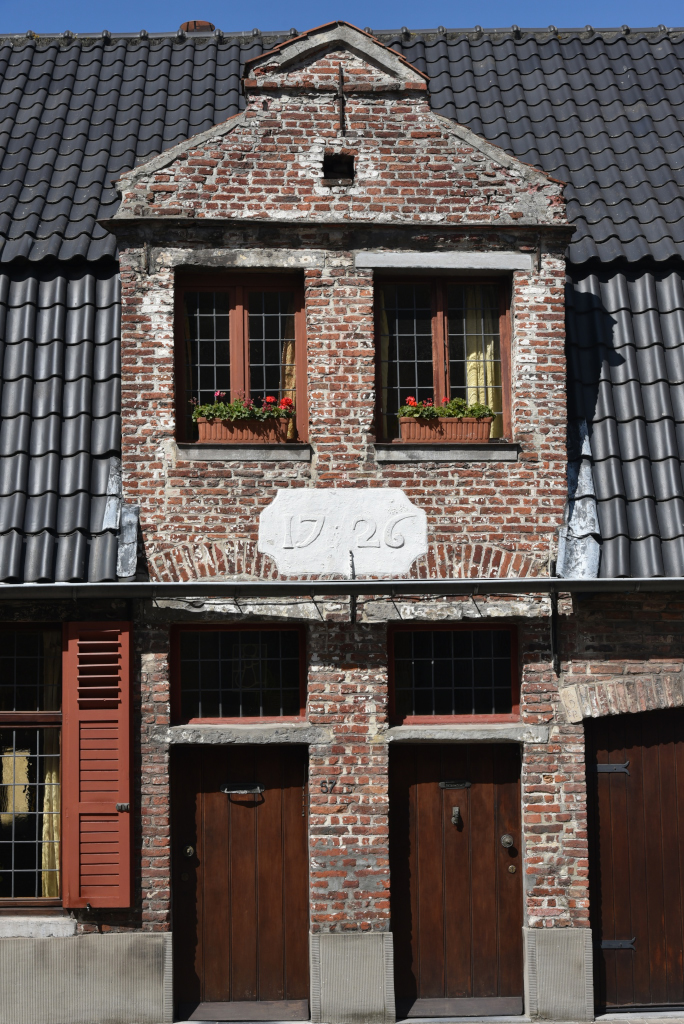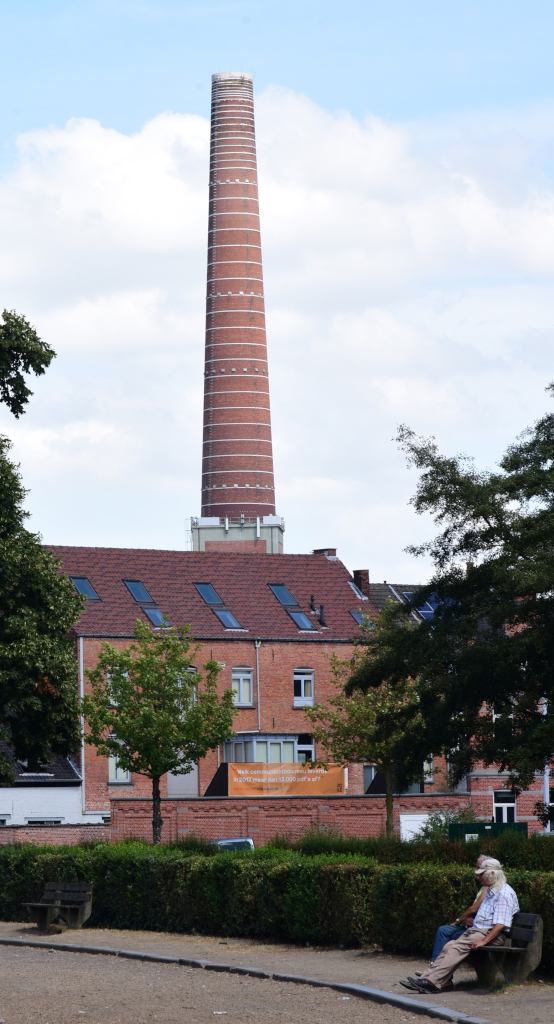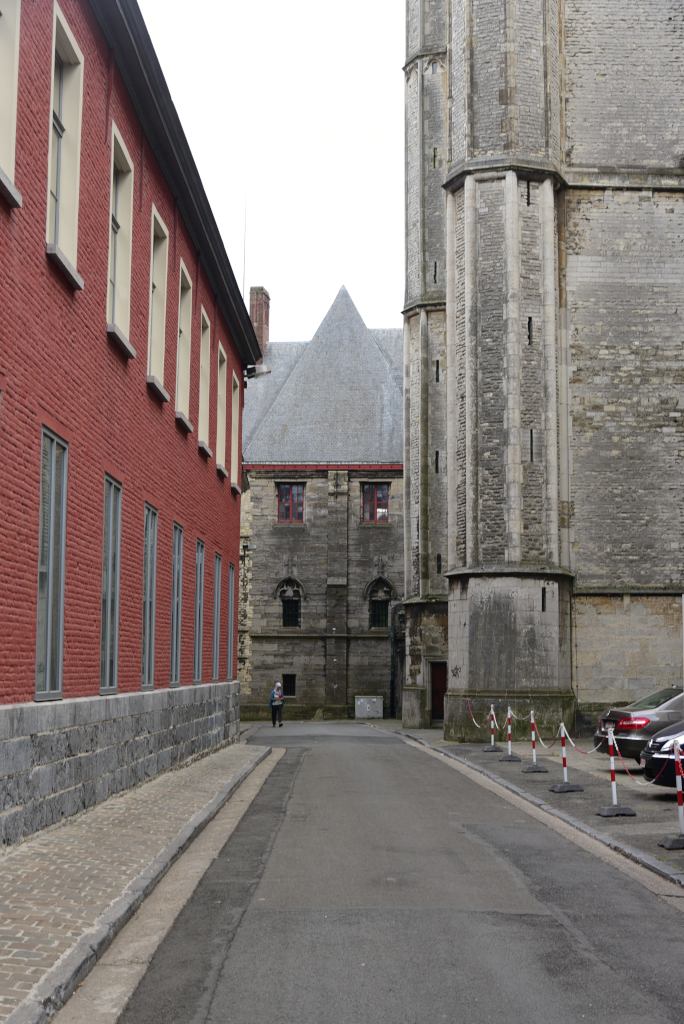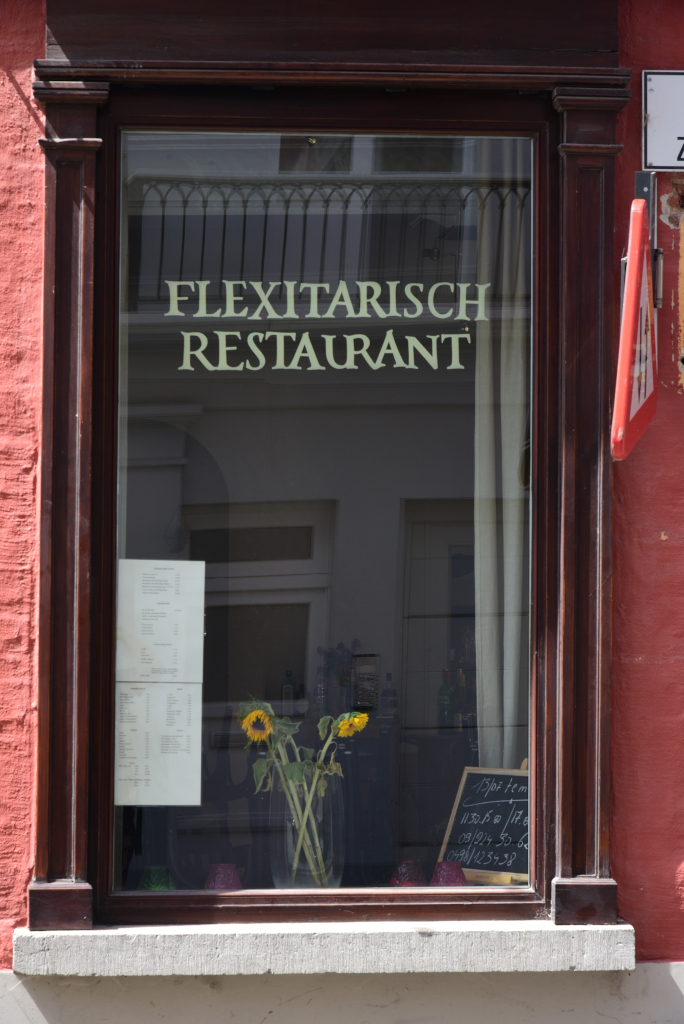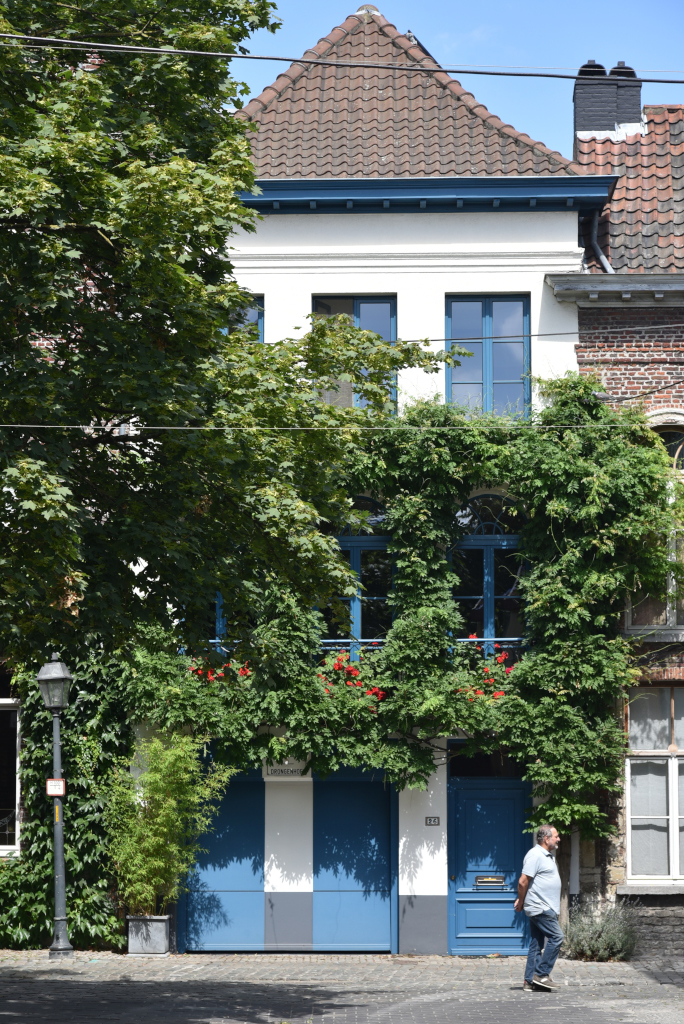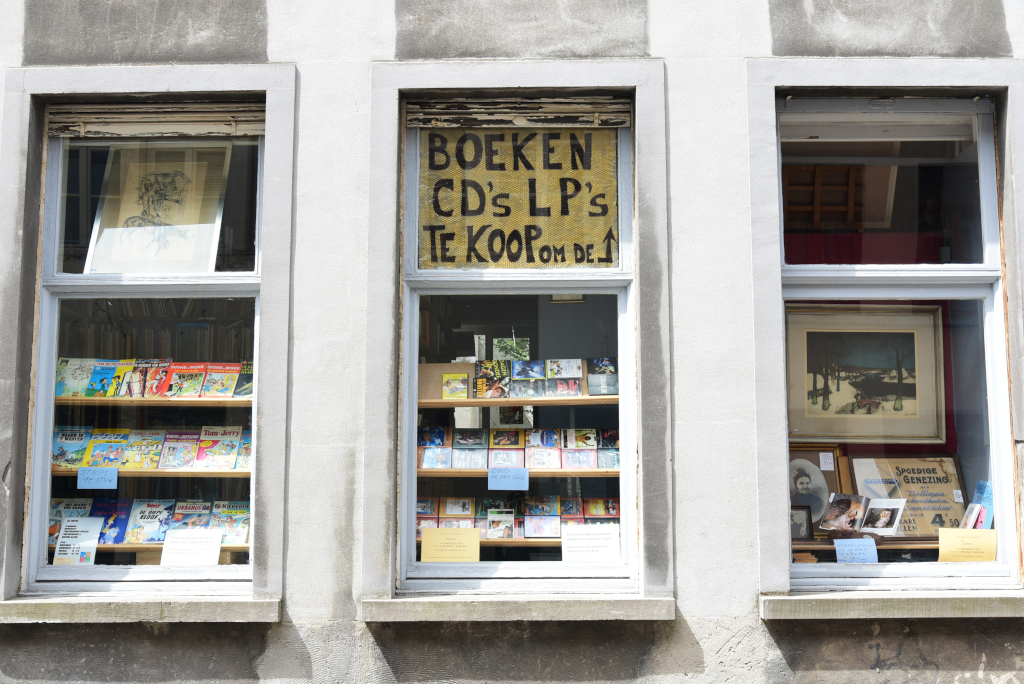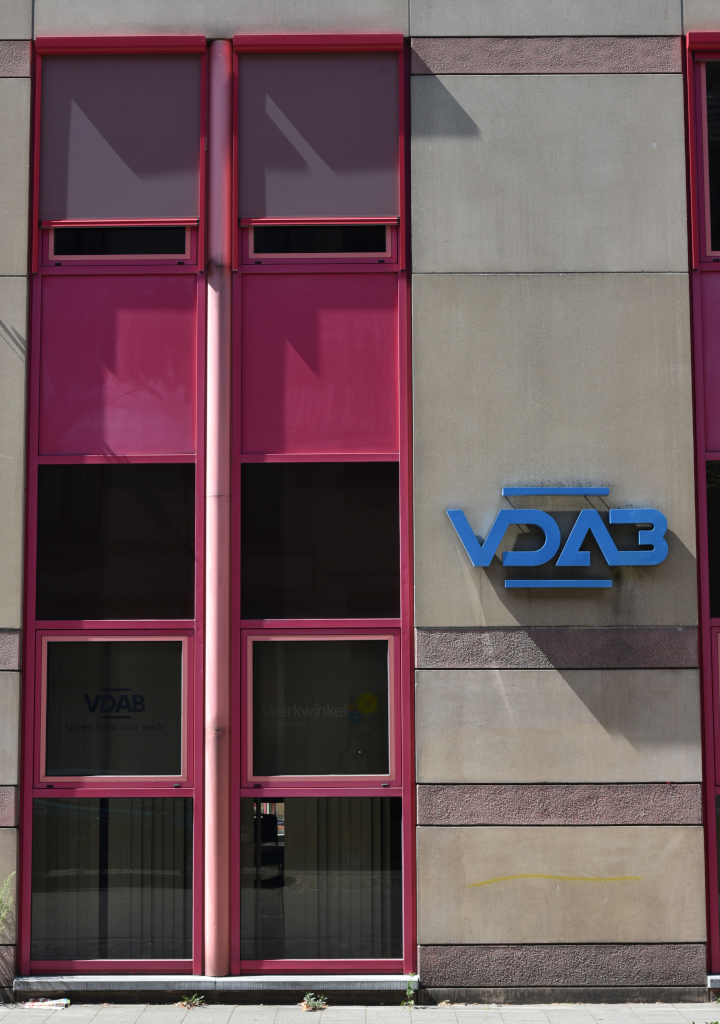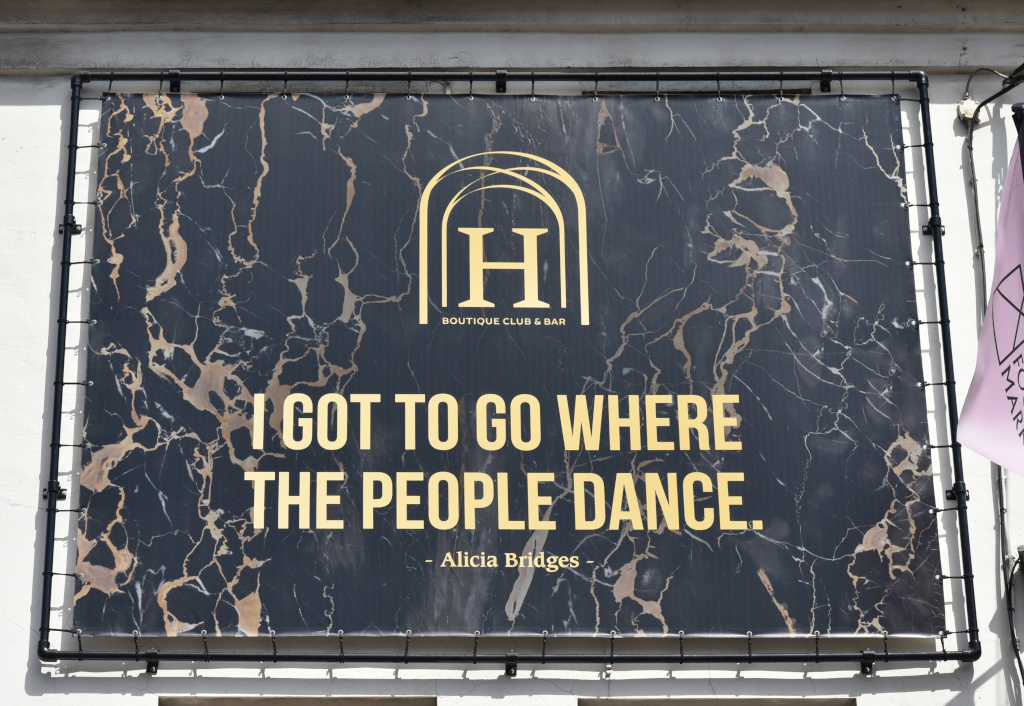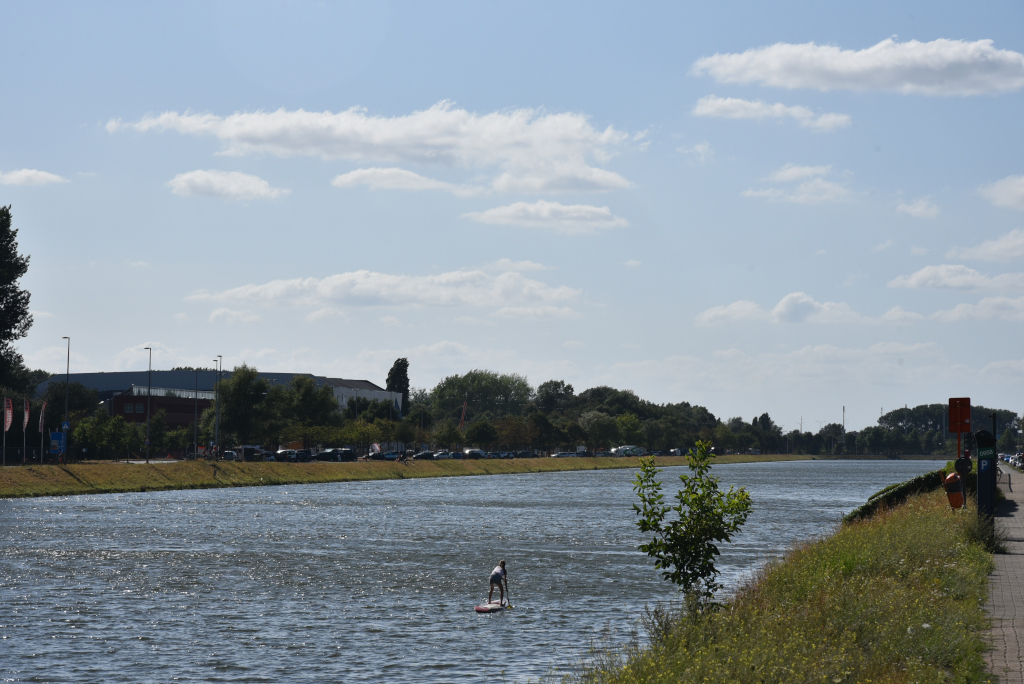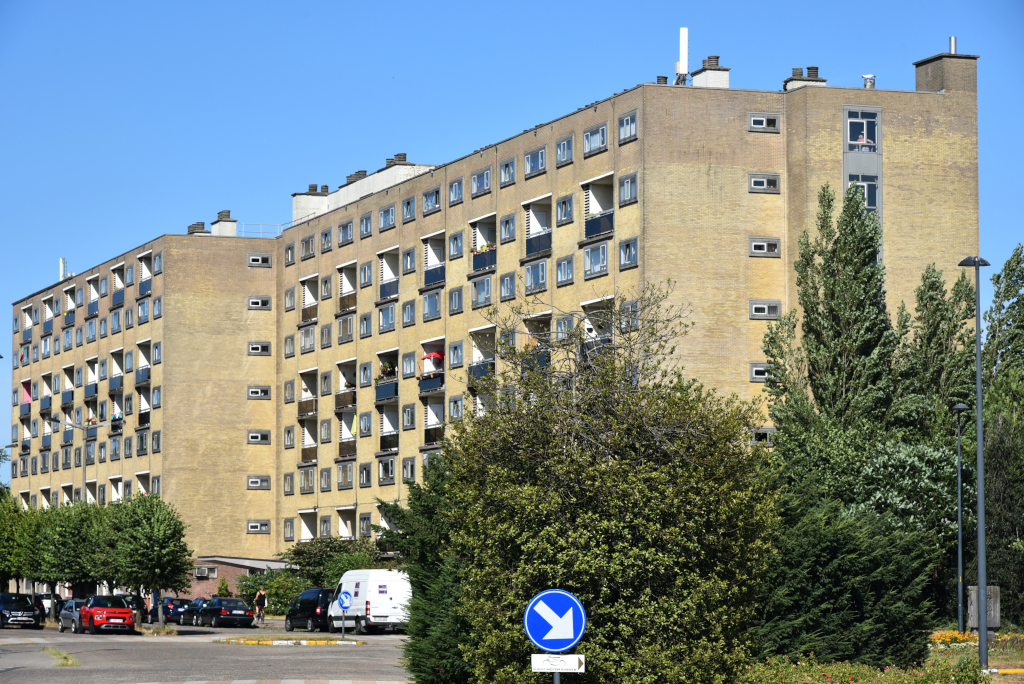July 28, 2018
One of the great monuments of the Middle Ages in Ghent is the Saint Bavo Cathedral (Sint Baafskathedraal), whose 89-meter-tall dominates the centre of town. The cathedral was built on the site of the former Chapel of St. John the Baptist, consecrated in 942 by Transmarus, Bishop of Tournai and Noyon. From the 14th through 16th centuries, the simpler Romanesque structure was continuous expanded on in Gothic style, finally being completed in the mid-16th century.
The structure’s bulk is accentuated by the slender turrets flanking the corners of the massive tower, with its tall slender windows in an exaggerated Romanesque, the sides of the primary structure characterized by large arched bay windows, both peaked and rounded. The slender turrets featured on the typical medieval structures are often complimented with finials both patterned along the steep conical domes as well as the encircling ornamental balustrades, all in the same stone.
The Sint-Niklaaskerk is one of the oldest and most prominent landmarks in Ghent. Begun in the early 13th century as a replacement for an earlier Romanesque church, construction continued through the rest of the century in the local Scheldt Gothic style (named after the nearby river). Typical of this style is the use of blue-gray stone from the Tournai area, the single large tower above the crossing, and the slender turrets at the building’s corners.
The church was popular with the guilds whose members carried out their business nearby, each guild adding its chapel to the sides of the church in the 14th and 15th centuries. The central tower served as an observation post and carried the town bells until the neighboring belfry was built. One of the treasures of the church is its organ, produced by the famous French organ builder Aristide Cavaillé-Coll.
The Gravensteen was the residence of the Counts of Flanders until 1353. It was subsequently re-purposed as a court, prison, mint, and even as a cotton factory. It is now a museum and a major landmark of Ghent. The current castle dated to 1180 and was built by Philip of Alsace, and was built on the site of an earlier fortification. From 1180 until 1353, the Gravensteen was the residence of the Counts of Flanders. As well a protective citadel, the castle was intended to intimidate the burghers of Ghent who often challenged the Counts’ authority.
The 91-metre-tall belfry is one of three towers that overlook the old city centre of Ghent, Belgium, the other two belonging to Saint Bavo Cathedral and Saint Nicholas’ Church. Construction on the tallest belfry in Belgium began at the beginning of the 14th century, and reached completion in 1380. Through the centuries, the belfry was used to announce the time and various warnings, but also served as fortified watchtower and the place where the documents evidencing the municipal privileges were kept.
While the bells in the belfry originally only served a religious purpose, they gradually assumed a more secular role by regulating daily life in the growing medieval city. The primary bell in the tower, called Roland, was also used to warn the citizens of Ghent of an approaching enemy or a battle won. After subduing Ghent, which had risen up against him, Charles V, Holy Roman Emperor ordered the removal of Roland.
The rectangular hall adjoining the belfry was built to headquarter the affairs of the cloth trade that made the city rich during the Middle Ages. Inside, woolens were officially inspected and measured, and transactions negotiated. As the cloth industry lost importance, the hall drew new occupants, including a militia guild and a fencing school.
(Narrative excerpted from Wikipedia)


